Refitting an old boat: Sailing Adrift
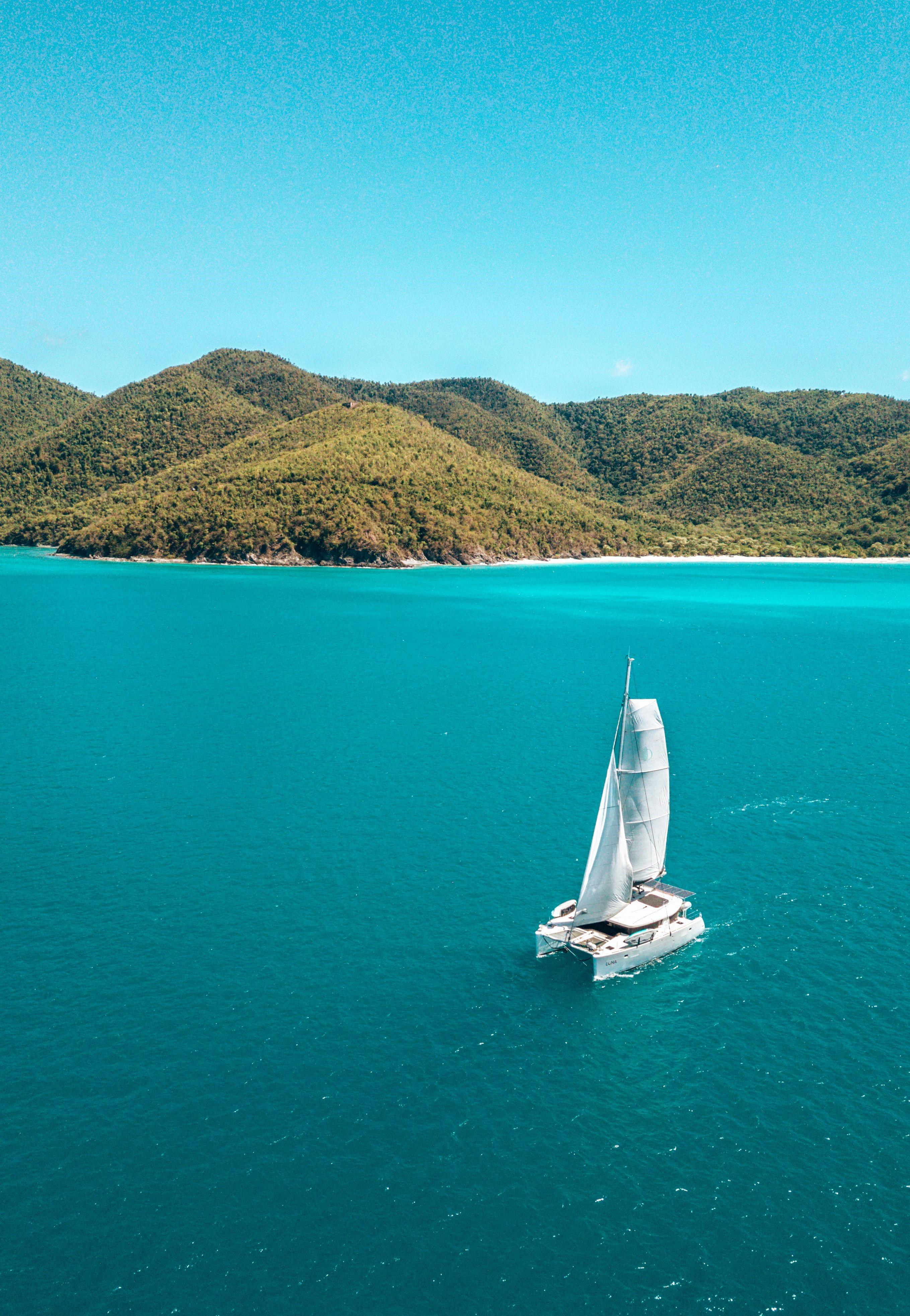
South East Malaysia Rally
2Birds2Hobart
Inspiration from the galley


















An interview with Fabiola Hirschhorn
PLUS Barge Boats and much more!

October 2023



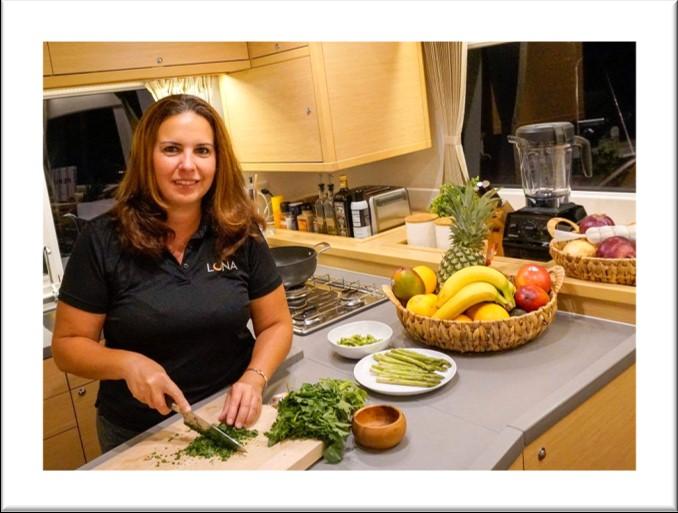






SisterShip 3 Published by: SeaScribe Pty Ltd. ABN 636577789 Editor: Shelley Wright Postal Address: PO Box 83 Anna Bay, NSW 2316, Australia. www.sistershipmagazine.com Email: editor@sistershipmagazine.com Contributions are welcome. Please contact us for contributor guidelines. ©copyright 2023. SeaScribe Pty Ltd. Original editorial and advertisements in this magazine are copyright and exclusive property of SeaScribe Pty. Ltd. Reprinting of any material in whole or part requires the written permission of the publisher. Comments and opinions expressed within this magazine are not necessarily those of the publisher or editor. Contents 4 The Bowsprit: Editorial…………………………………………..….…....Shelley Wright 6 Fixing an Old Boat with Kelly McCall….. ……………………..……...…..…Erin Carey 14 2Birds2Hobart………………………………………………………..………...Kathy Veel 22 South East Malaysia Rally 2023 Part 1…………………………...……...…..Gina de Vere 32 Inspiration from the Galley with Fabiola Hirschhorn…………...…...…...…...Erin Carey 40 South East Malaysia Rally 2023 Part 2…………………………...……........Gina de Vere 46 Trim Tales: The Ship’s Cat……..…………….………………...………….......Lyn Battle 50 Flat-Bottomed Girl: Taking the Scenic Route……………...……………...Valerie Poore 59 Book Reviews
32 50
COVER: Fabiola Hirschhorn’s luxury Lagoon catamaran LUNA in the USVI.
Dogs and cats who sail…
Here in the southern hemisphere spring has sprung and, for those of us not fortunate enough to have spent the cooler months cruising tropical waters, it’s been good to get out on the water without layers of fleece and beanies.
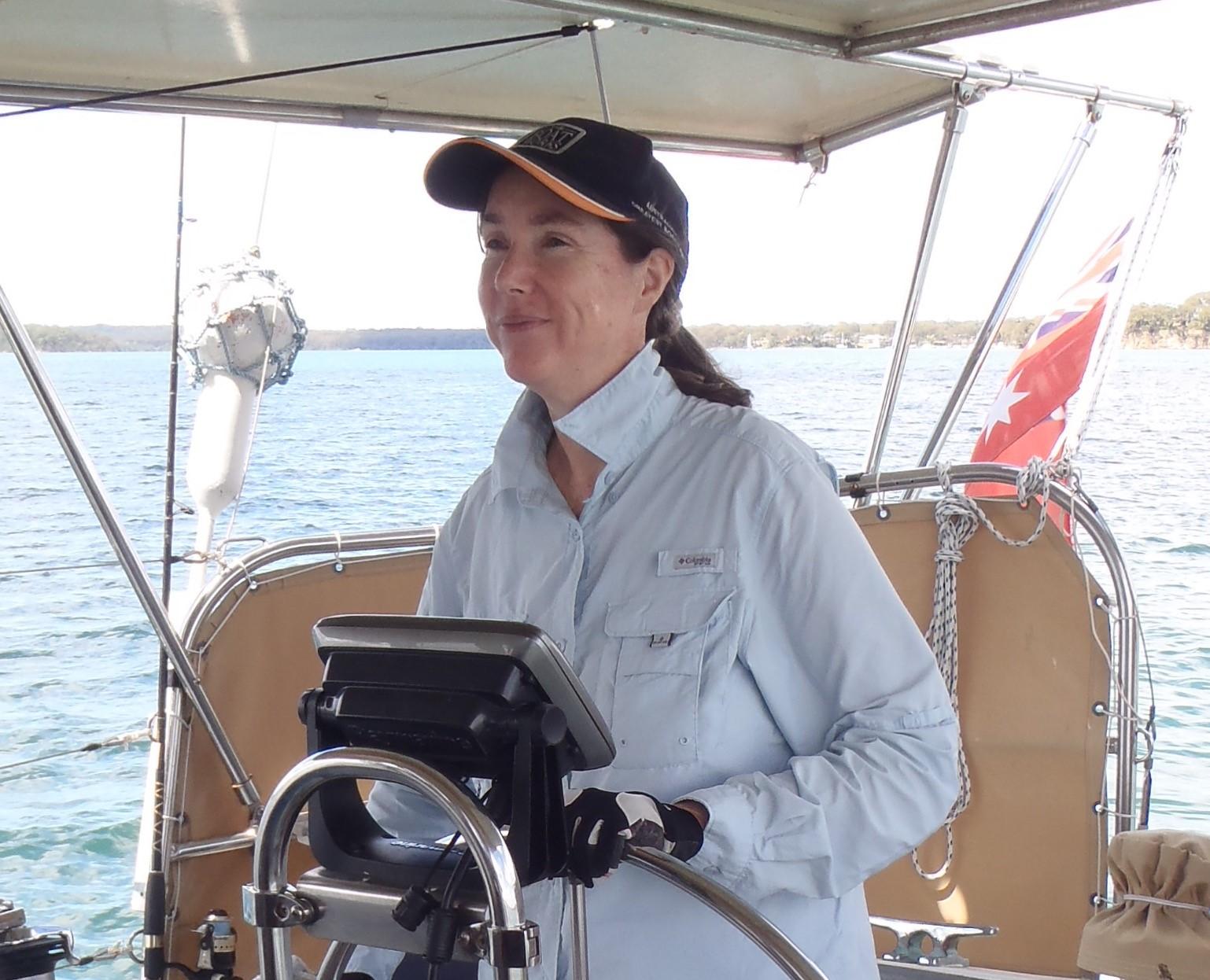
This year the SisterShip crew has been joined by Ash, a miniature dachshund short in stature but large in personality! Although not keen to get her feet wet, Ash has taken to sailing and mucking about on boats with gusto. Having a pet on board certainly adds challenges to boatlife, and there is a lot of
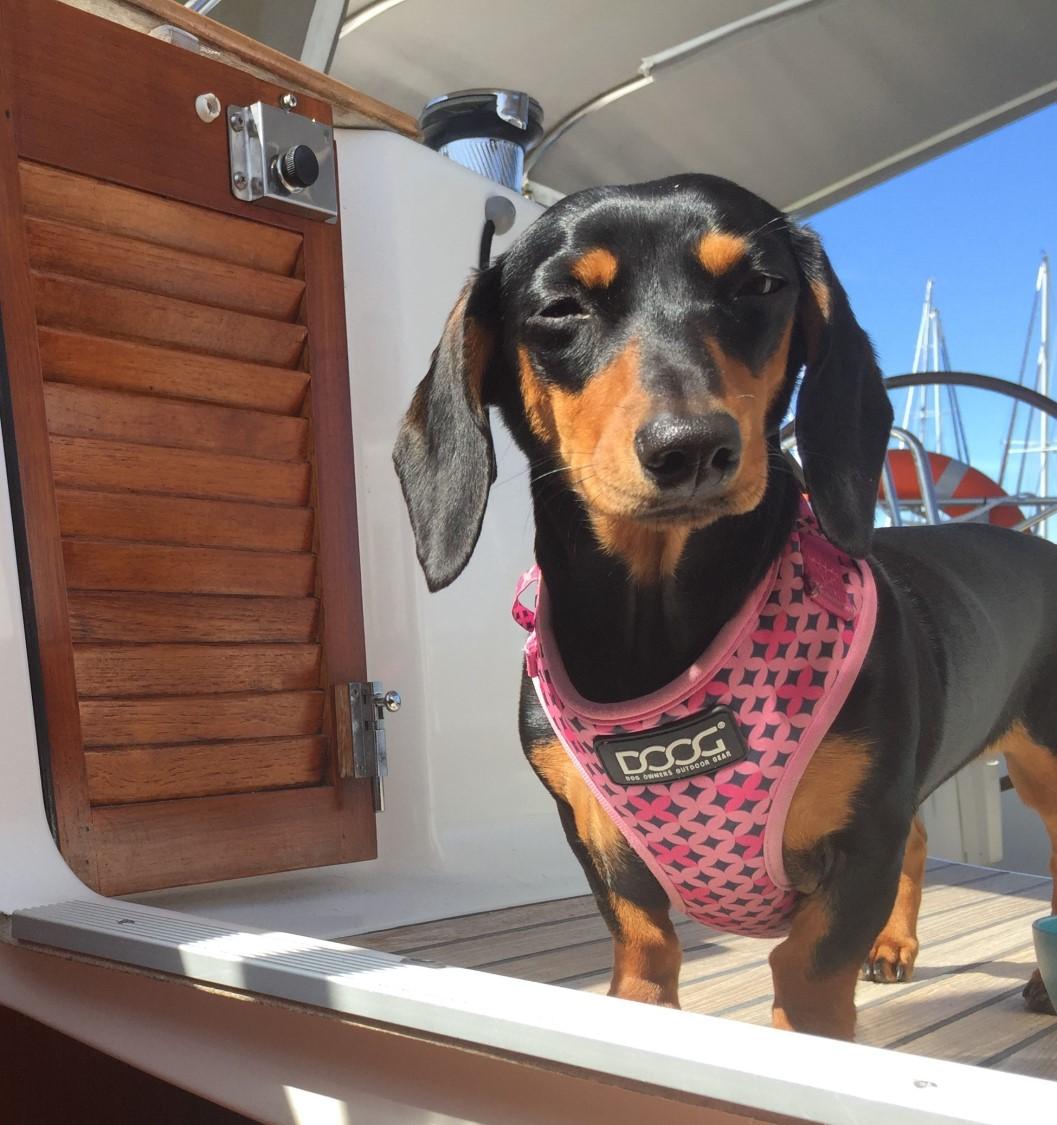
The bowsprit


added responsibility, not only to keep your dog (or cat) healthy and happy, but also to be environmentally conscious (sorry Fido, no chasing seabirds!) and aware of other people (marina neighbours and beach goers). I’ve found the Dogs Who Sail Facebook group an invaluable source of information.
If you are more of a cat person, be sure to read Lyn Battle’s ‘Ship’s Cat’ story on Page 44. And if you do sail with a pet, send us a story!
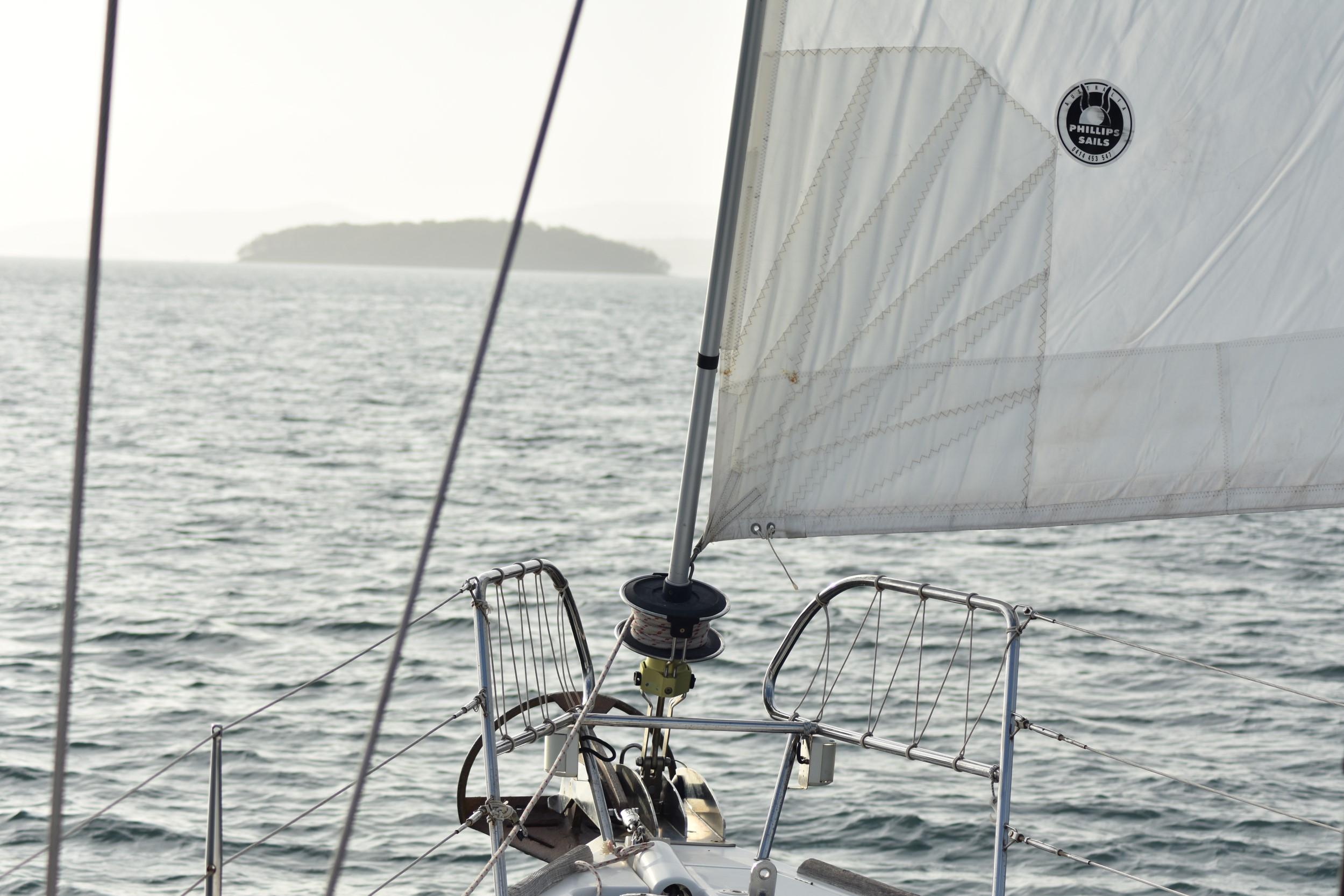
Wherever you are on this blue planet, stay safe and, as always, look for the dolphin...
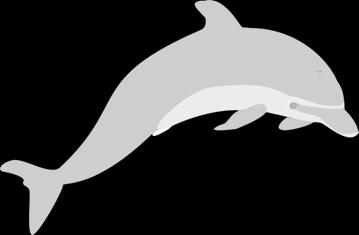

SisterShip 4
From the editor
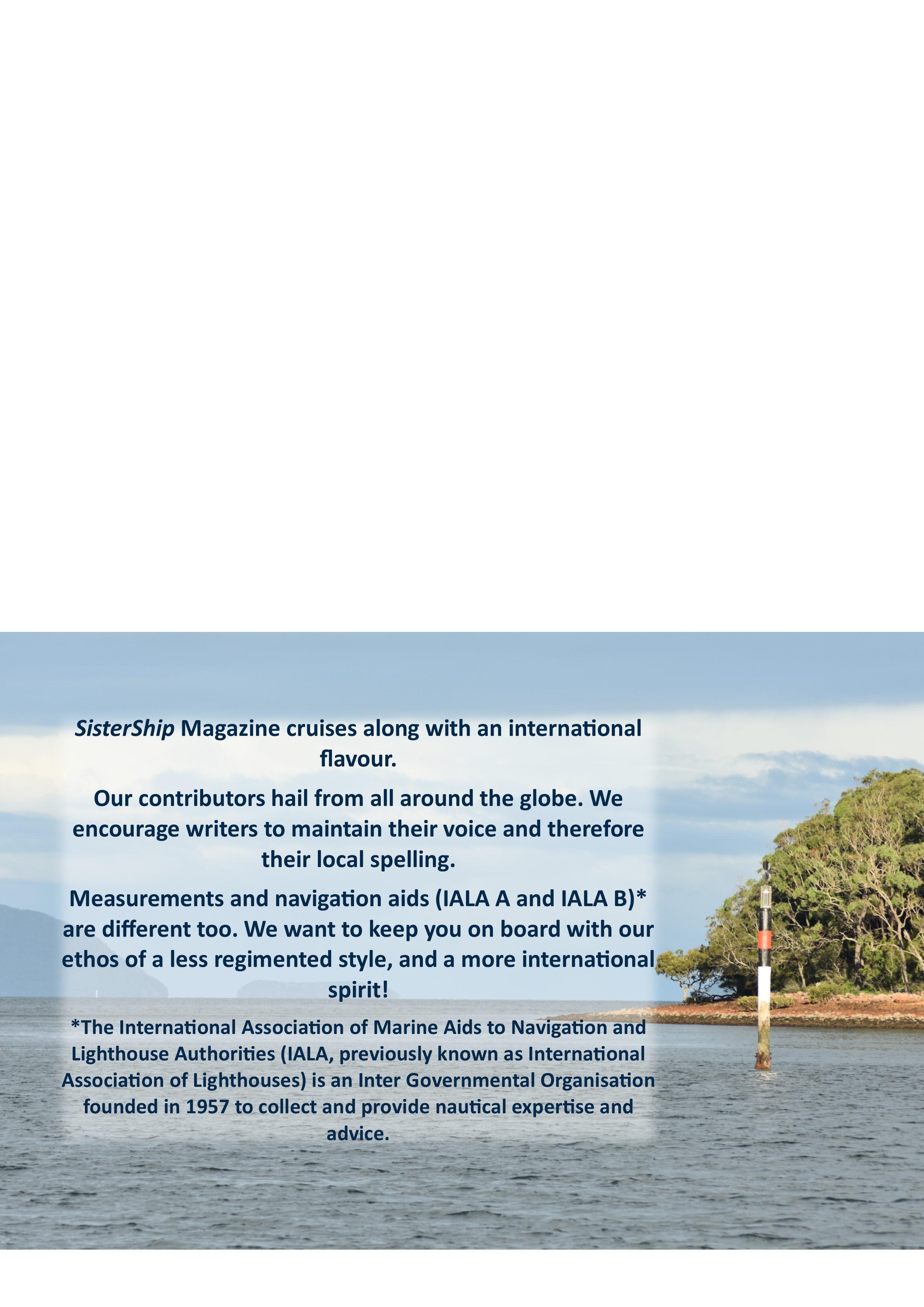
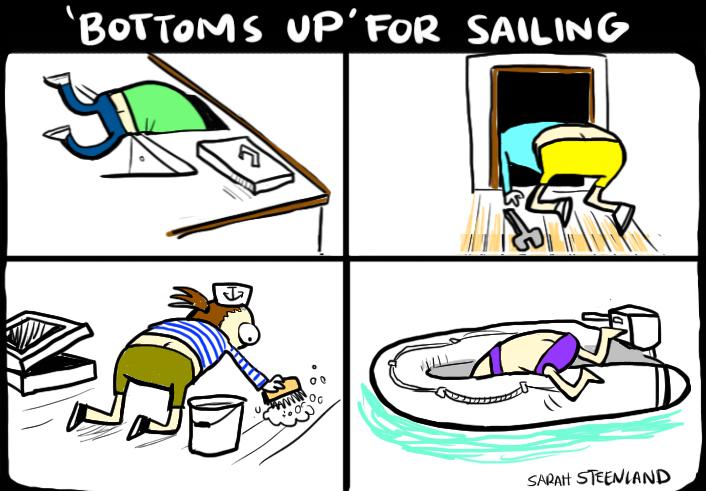
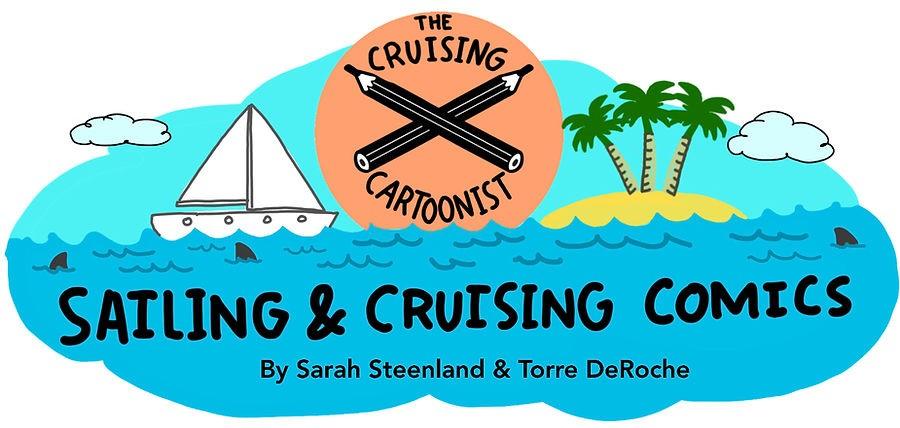
www.sarahsteenland.com
Refitting an Old Boat

Erin Carey interviews
Kelly McCall from the YouTube channel SailingAdrift
Thanks for agreeing to be interviewed as a part of this interview series. Can you tellusalittleaboutyourself?


My husband, Chris, and I have spent the last three years refitting our sailboat from our driveway in Portland. Now we’re full time liveaboards. I grew up in a rural town off the coast of Washington that no one has ever heard of, so that’s probably where my introverted nature and appreciation for the water manifested. On the flip side, that same small town cultivated a thirst to get out and explore. For the last seven years, I’ve worked as a designer and drafter for a small home building company in Oregon and have transitioned my role there from being cubical bound to remote, which will allow us to travel without timelines. What better way to quench that thirst than by boat? See the world, in a self-reliant way, with all the comforts of
home in tow!
Whydidyoudecidetorefitanoldboat?
I have to admit, this wasn’t my idea, but it ended up being my decision. About five years ago, I was sitting at my desk when Chris sent me an article about a couple who quit their jobs, sold everything, and bought themselves a sailboat to travel around the world. My initial thought was: “Hell yeah! That sounds awesome. Let’s do that!”. We both had dreams of travelling and living simply. We were also incredibly excited by the idea of becoming digital nomads and being able to live in a self-sustaining way. Prior to reading the article, I wasn’t ever considering I would do this on a boat. However, Chris had a much more romanticized version of our plan and he can be incredibly persuasive. Several ‘pros & cons’ lists later, I agreed to buy a boat.
Knowing next to nothing about boats, buying a boat (a REALLY BIG BOAT) was very intimidating. We quickly realized buying something ready to cross oceans was out of our budget and we would need a few years of
SisterShip 6
planning and preparation to really set ourselves up to live the life we wanted in a sustainable way. I was just getting my career rolling, so I couldn’t just drop everything and leave anyway. I knew I had much to learn about boat life and sailing, and we also needed to start saving and cut out the fat from our monthly expenses. After lots and lots of discussion, refitting a boat presented the most practical path for us.
The idea of a reffit was also a very intimidating concept due to our lack of overall boat knowledge, but it was somewhat justified, because both of us have backgrounds in design and construction. We work a lot with our hands and thrive off always having a project. The satisfaction I get from creating something from scratch is like none other. I knew this would be a huge driving force in keeping the project alive and I also knew I could count on Chris to see this through. There was literally nothing stopping us. We would be creating our own custom home and have the luxury of knowing every square inch of the space and how everything works. Pair that knowledge with new skill sets; like becoming an electrician, a seamstress, and a carpenter (to name a few). Now I feel like we can take on just about anything!
Howdidyouchoosewhatboattorefit?
To be totally honest, I felt like our boat shopping experience was far too short BUT I’m so glad we bought the one we did. After learning what I know now, I don’t think I’d even consider anything else. So, maybe it was short for a reason?
We were excited to get started and had our list of haves and wants. We looked at hundreds of listings but only physically toured a handful of boats. Our pitfalls in this process were not having any liveaboard experience or knowledge of marine anything, so we really didn’t know what we were looking for. We had a list of desires based on
our creature comforts backed by a list of what we thought we wanted (by vicariously living through other sailing couples on YouTube).
When we saw the listing for our boat, a 1972 Nauticat 38’, we sprang into action pretty quickly. It was close enough to make a few day trips for inspections, the price was right within our budget, it checked our boxes for livability and ocean cruising, and the manufacturer was highly regarded. There’s a reason these boats hold their value. The big red flag was that it had two previous owners who, collectively, had it on the hard for the last 15 years. I am a little embarrassed to say, we bought a boat and didn’t even know if it would float.
The big selling point for me was that it was a motor sailor, so even if we weren’t cut out for sailing or didn’t get the hang of things right away, we could still embark on our adventures once the refit was complete. Making this kind of investment was a pretty big deal; I tried to justify every decision with a contingency plan but learned there are some things you just can’t plan for.
When did you begin, and how many hours a day/week/month have you put intoit?
We purchased the boat in April of 2017, not doing much actual work for a little over a year while formulating a plan of attack. I say attack because that’s exactly what happened to the poor thing. We completely gutted it. Tore out all the plumbing, electrical, cabinetry, headliner, floor, tanks, and even a few bulkheads.
The real fun didn’t start until June 2019 when we tricked our landlord into letting us park ‘a boat’ in the driveway. (To be fair, she never asked how big it was). Once we got it home, it was a lot easier to put the hours in.
In February 2020, Chris and I got married in
SisterShip 7
beautiful Maui, and then came home to the pandemic. For me, the lockdown was a blessing in disguise because this gave me the opportunity to prove myself as a remote employee. While many businesses halted, the construction industry did not. We were both able to keep working but we also had a lot more flexibility working from home and this freed up our schedules to really jump start the project. This is where Chris and I developed another new skill: Insomnia! We created the illusion of being totally normal functioning adults for quite some time.
Chris, being the project lead, kept track of his time earnestly through an app called Toggl. He would tell you, he isn’t a naturally organized person so he has to be diligent when it comes to numbers and tracking. Between June 2019 and the end of that year, we spent 400 hours working on the boat. In 2020, we logged 1400 hours. 2021 was slightly higher with 1450 hours. 2022 was our big year with 1550 hours (and that was only through
to September)! We averaged 80-160 hours a month, with a weekly record of 88 hours between the two of us, and a monthly record of 268 (2nd month of the pandemic).
I took the lead documenting our progress through our YouTube Channel. I’ve been logging about 25 hours a week in editing alone since the very beginning; a big learning curve there too, and it shows in my early efforts.
This last year, 2022, was a big push for us. We had a deadline to splash the boat in July and I’m so proud to say we made that happen! It even floats, just like we hoped. I felt like every day leading up to our deadline was a scramble. Moving out of our rental in time and downsizing our lives to fit aboard was its own struggle in addition to make the boat ‘move-in ready’ but we did it!
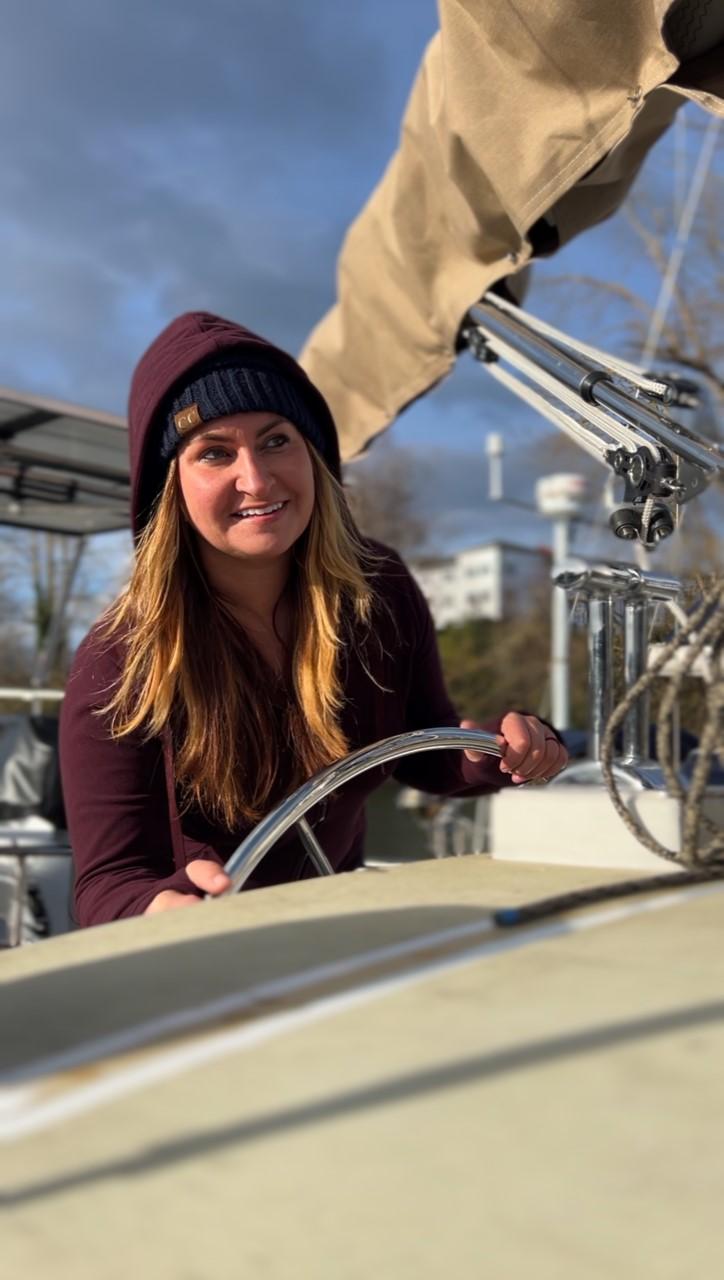
Have you been living aboard while you refit?
This was not the plan but, yes, we were by the end of the project. I tried like hell to have everything dialed before we moved aboard and got settled, but it was only recently that I came to the realization that our lives will probably always be in some version of “refit mode”. During the refit, everything we created was a prototype, we hadn’t yet lived in the space or experienced the boat for all its capabilities (moored or underway). We didn’t know what we didn’t know. Since we’ve moved aboard, we’ve reallocated certain stowage areas, added some lights, and even installed a heater that we didn’t think we’d need. One thing about living aboard a sailboat is that you are never going to be totally settled. That’s kind of what makes it so adventurous and appealing, right?
Haveyoualsohadtoworkajobwhileyou refittheboat?
Yes! I’ve been a full-time designer, drafter, and permitting specialist for a home builder
SisterShip 8
Kelly.
here in Oregon for seven years now. Chris also works running a drainage contracting company. When people as how that’s possible, I dig up my mom’s token phrase, “If you want something bad enough, you make it happen.” Usually, I back that with, “I’ll sleep when I’m dead.” And then Chris keeps the dream alive by making sure I know how big this adventure can be.


Tell us about some of the most challenging times/the biggest obstacles you’ve faced during the refit?
The biggest obstacle I faced in this whole process was me. It was my mindset. I constantly had to check myself. There is always a reason NOT to do something; and boy, did I find reasons! It’s too expensive, that will take too long, it’s not safe, what if it doesn’t work?
Chris is an ambitious person whereas I am more of a realist and those two worlds often collide pretty hard. There were many sleep deprived moments of frustration and countless misfires in communication between the two of us. This project tested us in some pretty epic ways but we’ve come out on the other side and I have a lot of confidence in
what we’ve created. Bring on the high seas!
When it came time to do the upholstery, I buried my head in the sand for far too long. I had never sewn so much as a throw pillow before all of this and now I’m supposed to make the whole freakin’ couch?! (I mean… ‘settee’). At first, I tried to justify hiring it out and then realized that wasn’t even an option with our budget. Then, I sucked it up, and made my mom dig out her dinosaur for a sewing lesson. Shortly after, I borrowed my sister’s machine and went to town making all the seat cushions and seat backs we could ever need. Not much later, Chris said we needed a few new canvas pieces, so I watched a number of tutorials on YouTube by Sailrite. My sister’s machine had no chance of tackling canvas, so I bought a fancy new industrial machine. With that workhorse, I built two stack packs, a sun cover, our Jacklines, a custom lee-cloth with a built in pocket, and some cute wench covers! Again, this was all my mindset, I just had to tell myself I could do it and I did. Now, I have a very valuable skill I didn’t have before and I can look around my home and be proud of what I’ve done. Education and experience can kill fear.

SisterShip 9
Kelley and Chris.
Has the refit been how you imagined/ anticipated it would be?
No, but probably not for the reasons you’d expect. When I initially decided to sign up for this project, I wasn’t thinking we’d start from scratch. I equated the term “refit” to “remodel”. I was anticipating more of a cosmetic approach like refinishing the brightwork, paint, install more stowage areas, and maybe upgrade some systems. I knew that alone would take a lot of effort and time but it seemed a lot more do-able.
About a year in, and what solidified our decision to move the boat into our driveway, was pivoting from a facelift to a full gutting and refit. We had initially given ourselves a very ambitious timeline and our “budget” was simply not exceeding what we could pull together for the month. Later, we re-assessed based on the giant learning curve and costs associated with our research into everything marine. We gave ourselves an allowance of time (three years) and a budget of $100k (including the purchase price of the boat: 25k). We hit both our marks by the skin of our teeth and I’m pretty stoked about that! We actually own our own home now (I’ve always rented) and because of how it functions, our monthly bills are extremely low.
Was there ever a moment when you wanted to quit? If so, how did you overcomethat?
Oh gosh yes. This is the type of project that literally consumes you and you need to be prepared for that. Not only did the boat become a top priority in our lives, it occupied every spare moment, every conversation, and manifested into a complete and total obsession. This part was not healthy and it became really overwhelming at times. Knowing there’s so much left to do and how your timeline and budget just keep shrinking… it’s not a good feeling. To top that off, the pressure is on, because it’s all on
YOU to make this happen and finish!
Not only was this vessel going to be our ticket to adventure, but it would also be our home and we each had a 50/50 stake in whatever we made out it. We refused to let each other down and while there were difficult times, our incentive to see it through far outweighed any struggle we faced. I don’t think I’ve ever been this invested in something without knowing for certain if it was going to pan out.
I think my stubbornness, combined with wishful thinking, and blind faith, kept me going. I also found a lot of inspiration from other couples who’ve done similar things on YouTube. Knowing that this dream could be possible because I’ve seen it achieved wasn’t a spoiler for me; it was pure motivation
How much have you spent on the refit? Haveyougoneoverbudget?
All said and done, we’ve spent about $90k of our $100k budget. This includes the purchase price of our boat, parts, expert opinions, more parts, materials, custom fabricated hardware, electronics, equipment, and every nut and bolt known to man.
This doesn’t include things like the three trips on a very expensive (but very cool) trailer, storage costs, tools we needed, the cost of the lift to put it back into the water, the crane to raise the mast, and a series of makeshift tarp shelters to keep the rain at bay.
Doyouhaveanyregrets?
Having come out on the other side, no. Absolutely not. I love every bit of this boat and I’m so proud of all the work we’ve done. As taxing as this process was, it’s totally worth it now. Giving up would have been the ultimate failure; a huge regret. My mindset is very different than it was three years ago and I’ve gained a lot of confidence in myself and strengthened my capabilities as a person by seeing this project through.
SisterShip 10
Now, if you were to ask me if I’d do it again… Hell no! I’ve paid my dues!
What advice would you give to others thinkingof doingthesame?
I would say take your time in the early planning stages and figure out EXACTLY what you want. Hone in on what is essential to your quality of life and figure out how you can make that work within your budget. What? It’s not in your budget? Get creative! Don’t let YOU talk yourself out of it. “There’s always a reason not to do something” but “if you want something bad enough, you make it happen.”
Create small goals so the big goal doesn’t seem as daunting. I like to make punch lists so I can enjoy the sweet satisfaction checking off those little boxes frequently.
Experiment with projects along the way and don’t be afraid to get creative. Sometimes the textbook solution won’t work for you so branch out and take in all the real world advice you can get from people who know what they are talking about. Still, be sure and do your homework, but definitely utilize as many resources as you can (YouTube, blogs, books, etc). There’s a reason why the sailing community is so close; it’s so small that the mass produced resources aren’t a thing, we’re all trying to figure these things out togetherthere’s no manual for what we’re doing!
Kelly and her husband, Chris, bought their 1972 Nauticat 38’ in April of 2017, and in 2019 went full steam head with a total refit in thedriveway of their home in Portland,Oregon.
By the summer of 2022, they christened SV Drifter by splashing into the Columbia River, and moved aboard fulltimethatSeptember.

They are now awaiting a weather window to tackle the wild west coast of the UnitedStatesandbegincruisingfull-time starting with Mexico and Central America with the intent of continuing west.
Find their whole refit adventure documented along the way at YouTube.com/SailingAdrift.com
Feel free to contact them directly with any thoughts and questions through their website: www.SailingAdrift.com or by dropping them a line at Hello@SailingAdrift.com
Erin Carey lives aboard her Moody 47 with her husband and three sons. After two glorious years in the Caribbean, the family crossed the Atlantic Ocean and are currently sailing the Mediterranean. Erin is the founder of Roam Generation, a PR agency for travel, leisure and luxury brands. Roam Generation is the only PR agency in the world run from a yacht!

SisterShip 11


SisterShip 12
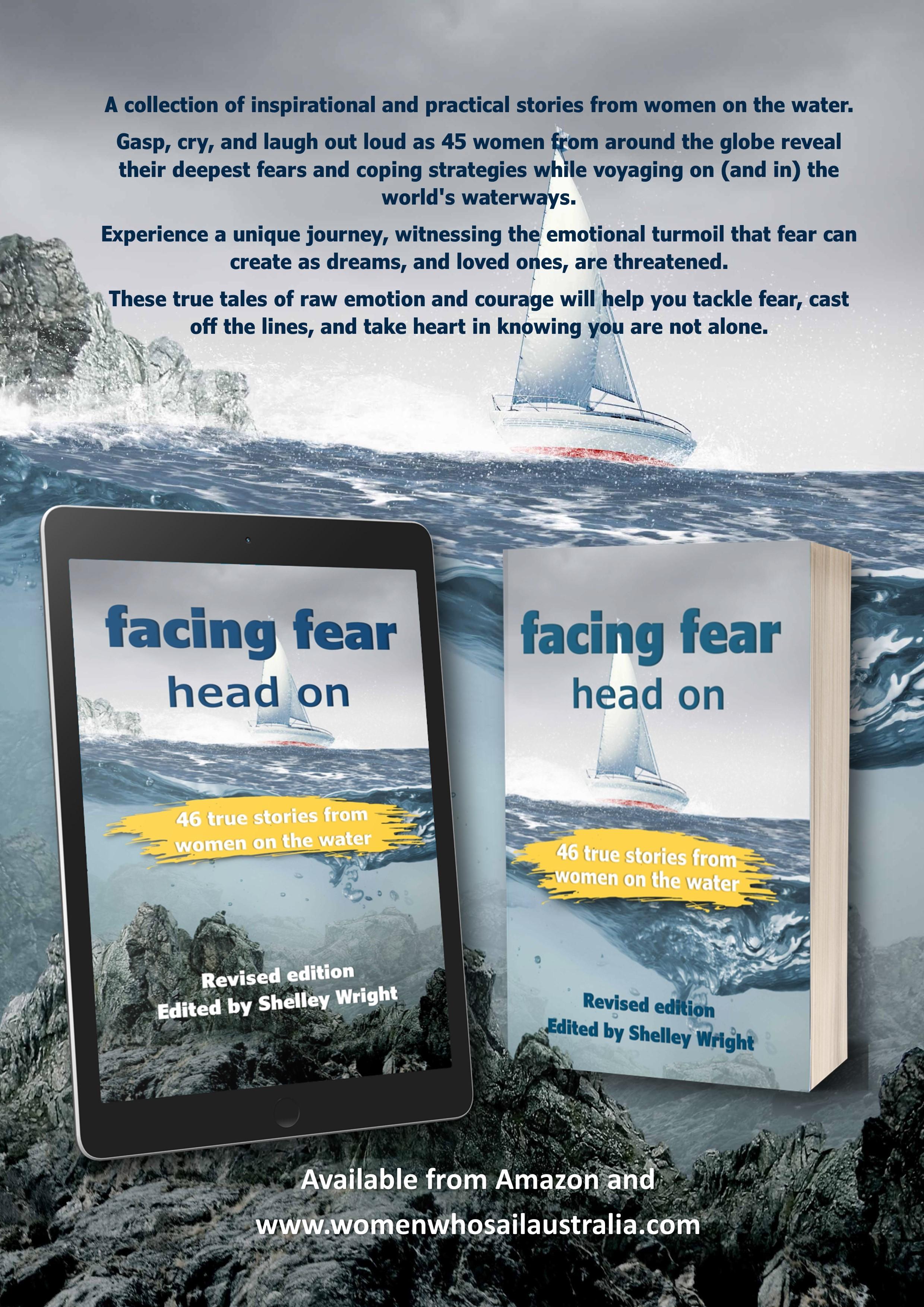
2Birds2Hobart
By Kathy Veel
Can two women with age, experience, modest means, and a small affordable yacht compete successfully in the Sydney to Hobart race?

This is the question we posed in March last year. By now it’s been answered, but how did it all come together?
Early experiences of sailing
To introduce ourselves: I’ve been sailing all my adult life. My initial dreams – inspired by the likes of Naomi James, Robin Lee Graham, and Clare Francis – were of singlehanded sailing in a small seaworthy yacht which I could manage and maintain myself. Early experiences of cruising my own 24foot yacht, often in company with the Coastal Cruising Club, led to an interest in navigation, a Yachtmaster Offshore qualification, yacht deliveries, instructing,
then joining a race yacht as navigator. I abandoned the singlehanding dream after meeting my husband, who loved sailing but is a very land-based artist, and settled into family life and an art teaching career. Before Currawong I owned three small timber yachts, and have accumulated 15,000 ocean miles of cruising, racing, and deliveries.


Bridget spent her first pay cheque on sailing lessons and has never lost her passion for it. She’s owned and built boats, sailed across the Atlantic and has thousands of miles of offshore racing experience, including eight Sydney to Hobarts. Her career was nursing and for years she has been a very active SES volunteer as a field team leader. She is handy with a chainsaw, and drives floodboats and heavy vehicles.
Women on Water and Making Waves
Bridget and I met in 1989 when Women on Water (WoW) was getting the 1989 allwomen Sydney-Hobart campaign going. I
SisterShip 14
was a foundation member of WoW and sailed the 1989 and 1992 Hobart races with all female crews. Bridget was part of the team and sailed as watch leader in the gale swept 1993 race and two more with WoW. We reconnected in the last few years racing with Sailors With disAbilities (now rebranded as the Making Waves Foundation). This volunteer organisation provides sailing opportunities for people of all abilities with a range of programs from offshore racing to day sails for children. Bridget had been racing with SWD for years and I became a volunteer skipper after retiring in 2015. With Making Waves we have each sailed hundreds of miles and worked with many wonderful crews and clients.
The Sydney-Hobart idea
Sometime in March last year we were twilight racing on the Making Waves yacht and amongst the on-the-rail banter came the idea
of doing the Sydney-Hobart two-handed.

I had recently bought Currawong and sailed her from Melbourne two-handed. The new two-handed division in the Sydney-Hobart presented an opportunity for adventure and challenge in a race that has largely priced itself out of reach of all but the very wealthy. I could certainly never have the resources to maintain a fully crewed racing yacht. Now I had a yacht, only 30-feet long, but the first I’d ever owned capable of the entering the race. I also had a very keen, experienced, and highly skilled co-skipper.
The yacht
Built in 1973, Currawong was the first of Peter Joubert’s Currawong 30 yachts out of the mould. Joubert’s Baker-built yachts are renowned for strong construction and excellent sea-keeping qualities. The Currawong was a very successful half-tonner, and the most famous, Zeus II, won the Sydney-
SisterShip 15
Stripping old numbers from the sails and putting on the new ones.
Hobart in 1981, and placed second in 2001. When I bought Currawong she was wellequipped and but a lot was needed to get her race-ready.
After arrival in Sydney, I had an anchor winch and anchor well installed and the 3mm crazed windows replaced with 6mm acrylic. An opening in the foredeck was closed and rigging screws replaced.

Race preparation
I needed a new Australian Sailing sail number as the old ones had long since lapsed, and then came weighing, measuring the hull, rig and sails, and stability tests for IRC and ORCi rating. Weighing involves stripping everything off the boat except spars –anchors, sails, all loose equipment, even emptying tanks – and lifting the boat with a single point crane. Stability tests involve hanging 100kg from the end of the boom set abeam and measuring the angle of heel. The numbers are crunched to produce a time correction factor or handicap. We stripped old numbers from the sails and put on the new ones. It was now late August – four months to go!




Friends wanted to help and were interested in our project so we set up a Facebook page,
2Birds2Hobart (social media being just one of the steep learning curves we were negotiating). Some wanted to contribute so we set up a crowdfunding fundraiser on GoFundMe. We have been deeply touched by people’s generosity and wish to be part of the project.
We consulted Genevieve White from Marine Safety Works to equip the boat with everything needed for Cat 1. PFDs, PLBs, AIS MOBs, tethers, MOB retrieval sling… a long and expensive list. Then there were communications. For Cat 1 two-handed, an HF radio and Sat phone are required. The antique Wagner on board didn’t have the required frequencies and nobody knew anyone who could replace them. I had an Icom M804 installed with the required emergency antenna. For Sat phone, Iridium Go, bought via PredictWind, has been very satisfactory for calls, texts, and weather.
There were upgrades to the electronics too. Currawong’s B&G Vulcan 5 plotter was enhanced by a Triton, GPS compass, and a gateway so the existing Navman speed and depth transducers could input data. Having both the Triton and Vulcan displays in the cockpit was really helpful.
Currawong came with a Fleming windvane,
SisterShip 16
Flanked by Andoo Comanche, Currawong looked tiny.
but we didn’t have time to learn how to use it before the race. We used the Simrad TP22 tillerpilot when conditions allowed but ended up hand steering nearly all the time.
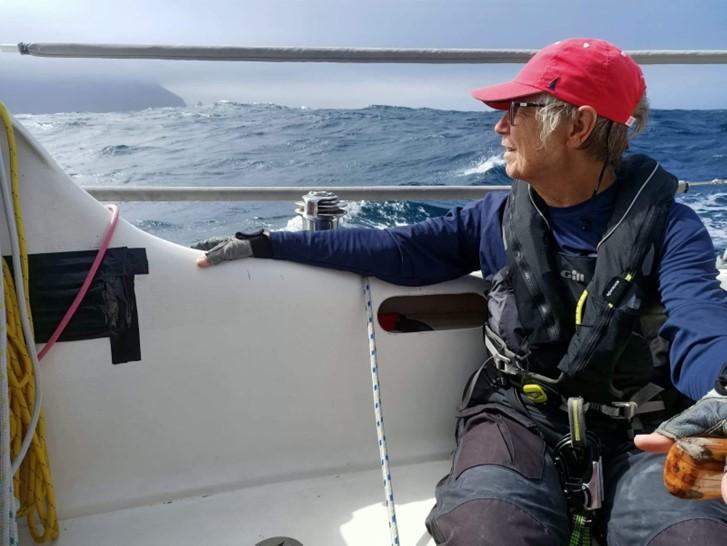
On the October long weekend we hauled out at Woolwich Dock, the only boatyard in Sydney that allows DIY. Flanked by Wild Oats XI and Andoo Comanche, Currawong looked tiny but was quite big enough when it came to sanding and antifouling the hull, and polishing the topsides. We did this ourselves, with the help of kind and generous friends.
Then there were winches to be serviced, mechanical issues to solve, deck layout and control lines to be optimised, sails and rigging, safety equipment and an engine to be serviced and a spinnaker pole to be replaced. Again, we are indebted to the kindness of friends helping us out, as well as the ‘pros’ who worked with us. We also had great support from the CYCA. Finally, just eight weeks from the start, Currawong was ready.
Now, to prepare ourselves. We had to update our qualifications which meant doing a twoday Sea Safety Survival course, a Long Range Radio Operator Course for Bridget, and a two day remote area First Aid course for me. We each maintained a fitness regime, we road -tested freeze-dried foods as Currawong has no fridge, and sailed as often as possible. We had to complete a 150-mile qualifying passage together in Currawong before we could race. We practiced sail manoeuvres, especially spinnaker handling, tried every sail on the boat and worked out how we could retrieve each other in a MOB situation. We also learned the importance of eating well, staying hydrated, and protected from the sun.
Ready to start racing
At last, by November we could compete Cat 4 and Cat 2 offshore races to Botany Bay, Bird Island, and Cabbage Tree Island. Each race presented its own challenges, and these
SisterShip 17
Kathy.
were the most powerful training. Racing found out weak points in old fittings and hardware, and we got to see the boat perform on all points of sail, in light and fresh winds. Currawong did well! She could push to windward at 6+ knots in a 20+ knot breeze, and we could carry a spinnaker in 20 knots. Spinnaker snuffers made handling our symmetric and assy (kindly lent by friends) much safer. Our 20-year-old mainsail hung in there and we enjoyed the rivalry with other smaller yachts.
By early December we’d ticked all the boxes for racing and could focus on the reality of race itself. Would it be a bad one? Were we really up to it? I deliberately avoided looking at the weather until less than a week from the start when the forecast models start to converge. Meanwhile Bridget cooked meals and froze them as single serves. These lasted for four days and kept us satisfied and well
nourished. We kept busy adding refinements to the boat like “cushions” for the lifelines and waterproof covers for the bunks so we could sleep in wet weather gear.
The Sydney to Hobart
The race gave us some of the best sailing ever. We had a 15-knot nor’easter which meant a beat down the harbour and spinnaker set as we turned south at the sea mark. We carried the kite for 21 hours, sitting on 8+ knots, and found ourselves off Batemans Bay next morning. As the wind escalated, we poled out a no 4 jib and reefed the main. By evening we were almost down the NSW coast and the forecast was for 4550 knot northerly wind. By this stage I was exhausted, and while Bridget was keen to continue with trysail and storm jib, I was too depleted and not confident of my own capacity. To continue, I felt, was to risk injury
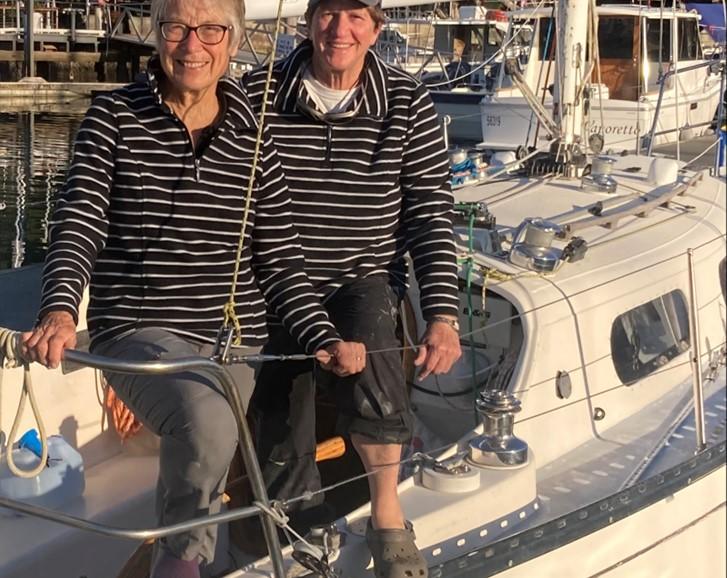
SisterShip 18
Kathy and Bridget.
or damage, and so made the call to rest a few hours in Eden. This was tough. It meant abandoning the competition, and we’d been leading in our division for a while, but for me safety came first.
Once we resumed racing next morning we had good winds as a SW front crossed Bass Strait, but a morning of light wind really dispirited us, as our closest rivals were now 150 miles ahead.
On the 29th, still north of Flinders Island, a strong easterly stream arrived, and we realised we could still finish before the new year. This gave us a focus and we pushed hard, flying down the Tassie coast, setting the kite from Freycinet to our last gybe into Tasman Island. Then 35 knots from the NE sent us on a screaming reach across Storm Bay. The breeze held and we sailed from the Iron Pot to the finish on one tack, scraping across the line twenty minutes before midnight on New Year’s Eve as the breeze dropped out. The welcome was unforgettable!
After thoughts
It was expensive, but so satisfying, to prepare my own boat. Racing was not in the frame when I bought the boat. I only wanted a boat I could confidently sail from Sydney to Tasmania. The decision to do the race meant fast tracking a lot of good work, and I reflect that had we not done the race I would most likely be in Sydney working out how to put a fridge in the boat. Instead, we’ve had an incredible adventure, including a wonderful week in Port Davey.
Would
we do it again?
Watch this space!
UPDATE!
Would we do another Sydney-Hobart is the question we’ve been asked all year. We can now say YES!
Thanks to the support of Katana1, a bright and energetic Sydney company of data warriors. We are completely blown away by their enthusiasm and can now make some upgrades to make Currawong faster and even safer.

Preparation is well under way. Last weekend we sailed the 88 mile Flinders Islet race course revisiting our light weather steering skills, concentration and energy management.
Currawong is being currently being re-rigged at Noakes as part of the preparation for the race, and will soon be out of the water for a scrub and antifoul.
We are already entered in the Audi Blue Water series of offshore races between now and the end of the year. We are SO EXCITED! 2Birds will fly again!
SisterShip 19


SisterShip 20

SisterShip 21
PART 1





South East Malaysia Rally 2023
Rallies are a great way to see a country, enjoy the hospitality of the region and learn about its cultural differences. As my husband and captain, Christian, and I found out, it is a great way to make new friends too. We are not ‘rally’ people normally, preferring to find our own way on Stardancer, our 14-metre GibSea monohull, but rallies through this scenic part of the world are preferable for a variety of reasons: visas and the frustrations of dealing with ever changing rules are made easier via a rally; boats are escorted by the Coastguard/Police of the Eastern Sabah
Gina de Vere
Security Command (ESSCOM) through the possibly dangerous parts of the voyage near the borders with southern Philippines; cultural dances and festivities are arranged, sightseeing is made easier; reliable contacts are provided to help you with the ever present need to buy and fix parts for your boat, buy diesel etc.
Each year Tourism Malaysia and others organise a wonderful rally from the island of Langkawi, down the coast of Peninsula Malaysia, enjoying the delights of anchorages

SisterShip 22
along the way. The ‘Rally to the East’ continues around to the diving islands of the East Coast of this peninsular. From these diving islands, there is the option of sailing to the beautiful unspoilt islands of Natuna and Anambas which belong to Indonesia, located in the middle of the South China Sea. The rally organisers can help with Indonesian visas. However, because we sailed here in 2016 we decided to sail directly for Kuching the capital of Sarawak, Borneo.
Borneo Island is divided between the countries of Indonesia, East Malaysia, and Brunei. East Malaysia is divided into the states of Sabah and Sarawak with the small, exceedingly wealthy, country of Brunei wedged between. The rally ends after going ‘over the top’ of Sabah, NE Borneo to Tawau, ready to hook up with the rally through Indonesia. As we sail through East Malaysia from June to August 2023 with the rally, I shall share the highlights of the voyage with you in the hope that someday you will sail these fascinating destinations and enjoy the incredible experiences yourself.
It has taken until now, 2023, for tourism to begin to return to its full vibrancy after COVID, and we are eagerly looking forward to the next few months sailing through this magnificent part of the world. Our plan is to hook up with the Indonesia rally that sails along the northern part of Sulawesi through some historic spice islands to Raja Ampat, the jewel in the crown of Indonesia, world renowned for its pristine waters and sublime diving. Not that I am a diver, more of a snorkeller these days. When we sail back, south to East Timor then west along the Indonesian islands of Flores, Sumbawa, Lombok, Bali, Belitung and back up the Malacca Strait to Langkawi Island, we shall put Stardancer up for sale. So this is our ‘last hurrah’ after twenty years’ full time sailing and living in a boat.
East Malaysia is just entering ‘winter’ as I write this in June. This means less rain and more sunshine from now on, and when it’s hot, it is very hot. A Malaysian man told me

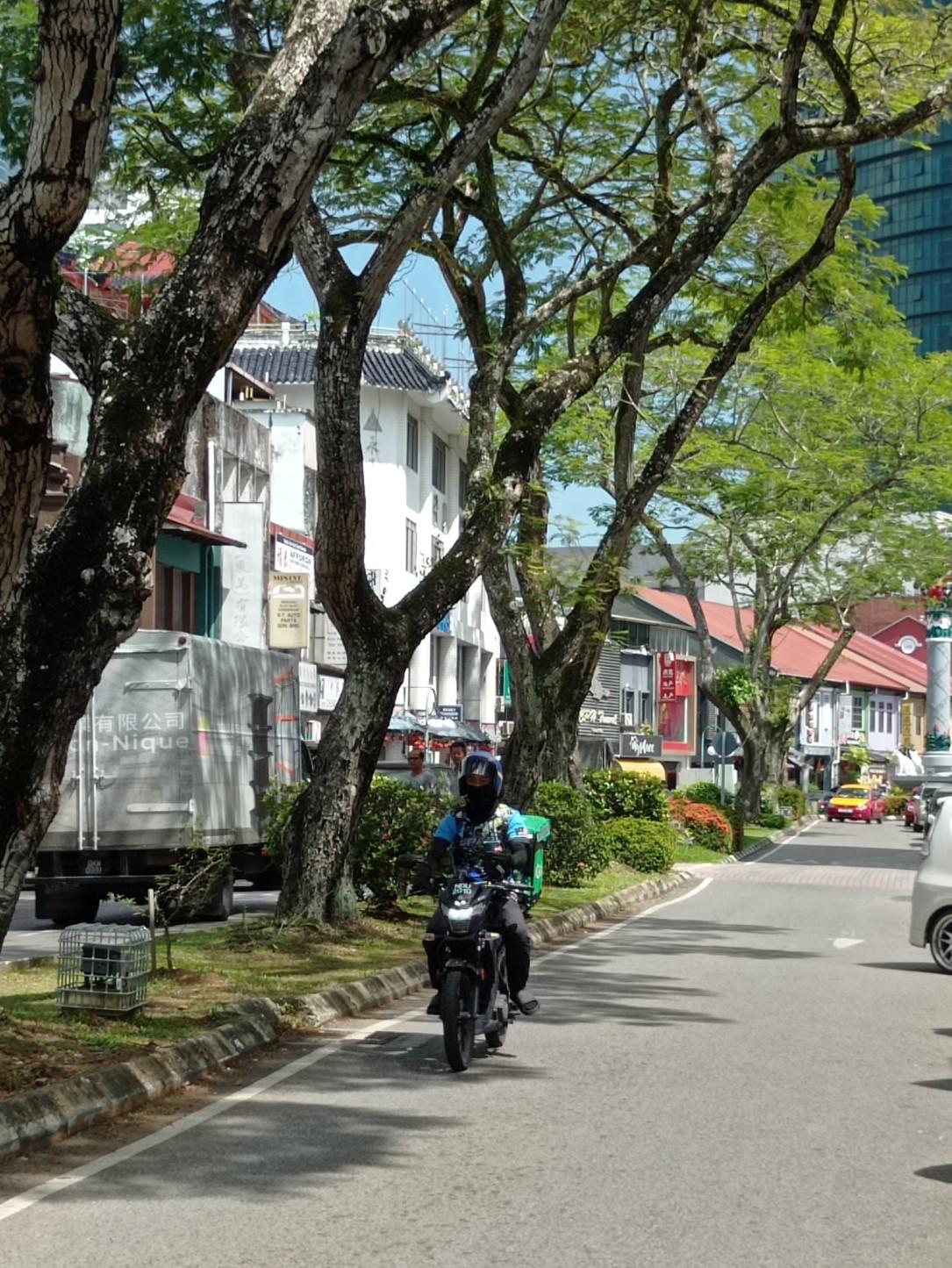
SisterShip 23
Chinatown with one of Kuching city's cat statues.
Kuching city.
Malaysia has three seasons; hot, very hot, and hot as hell! After ten years sailing SE Asia waters we agree with him. It is raining lightly today and a pleasant 29 degrees. Yesterday was a clear sunny day, 35 degrees. After sailing down the Malacca Straits, around Singapore and across the South China Sea, we arrived in Sarawak, specifically Kuching.
Kuching is the captital of Sarawak. Kuching in bahasa malayu means cat and cats have become the unofficial symbol of the city, showing up as statues in various parks and junctions. Colourful murals adorn many of the buildings adding to the quirky, creative feeling of a modern dynamic city. There is much to see from the colonial era in the form of well maintained buildings, interesting architecture, and several museums.
One museum that I particularly enjoyed, (and the cafe next door The Commons) is set in the lovely grounds of The Old Courthouse, and devoted to the memory of Margaret de Windt, who aged 19 married the second Rajah of Sarawak (Charles Brooke) and became a beloved Ranee or Queen of Sarawak. She lived from 1849 to 1936 and lead an adventurous life of travel as well as creating many projects to improve the lives of local people.
The Brookes ruled Sarawak for a century until 1946 and believed in leading it to become a modern state with its own government and constitution. After talking to locals and seeing the thriving State it is obvious to us that the people are proud of their colonial legacy. Sir James Brooke, the first white rajah, embarked on a crusade to end piracy, slavery, and head-hunting and the benevolent manner of ruling continued almost one hundred years. Sarawak became independent on 22 July 1963. There was a movie made in 2021 called ‘Rajah’ or ‘Edge of the World’ about explorer, adventurer, and first Raja, James Brooke and you can see the
trailer on YouTube.
My next favourite museum is the Textile Museum featuring the weaving crafts of the many different cultural groups in Sarawak, but the award winning Sarawak Cultural Village is my all time favourite. This village set just outside the city centre is made up of longhouses and stalls showcasing the crafts of the many groups of indigenous Dayak tribes. Iban is the largest group of Dayaks, and they consider themselves protectors of the endangered orangutans. When we were in Indonesia we went overnight up the Kumai River into the jungle on a small wooden ‘klotok’ boat to see orangutans in the Tanjung Puting National Park, Indonesia. This visit is one of the highlights of my life. The rally organises a day trip to the Semenggoh Wildlife Center just outside Kuching, which is a rehabilitation and research center for orangutans if you are time -strapped.
There are 30 national parks in Sarawak in an area the size of England and they each have
BELOW: Dayak tribes in indigenous clothing.

SisterShip 24
something unique to offer in the way of treks and guided tours. Monkeys of different types, exotic plants, and many bird varieties exist in these parks. Eight of the world’s 54 species of hornbills can be found in Sarawak and the Rhinoceros Hornbill is the symbol for the state of Sarawak. We enjoy watching hornbills, especially when they land in a tree, usually with a lot of loud squawking and clattering.
This year the rally is very lucky; we coincide with the three days of Rainforest World Music Festival dates. This festival is an annual event celebrating music from global artists, international indigenous peoples and local Sarawak music, performed in a great setting in the Sarawak Cultural Village.
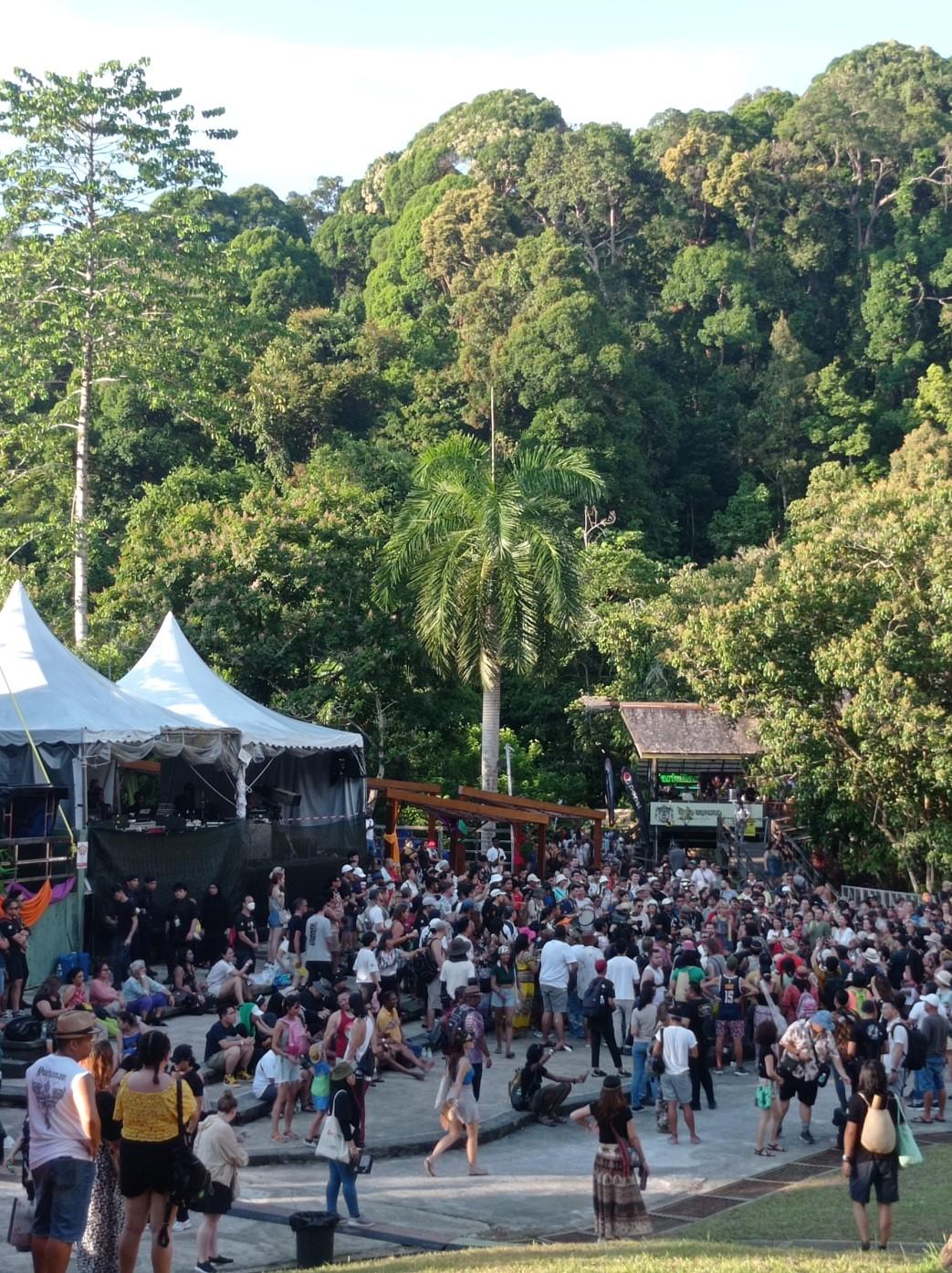

river in the city centre being held to celebrate the end of rice harvest, Gawai, and advised us not to miss it. The many various tribes wear their particular tribal gear and walk with their tribe to the sound of drums and cymbals along the waterfront. It was intriguing to see the differences and similarities of their dress compared to other tribal clothing and accoutrements we have encountered in New Zealand, Tonga, and Papua New Guinea in particular. Garments were mostly red and black in colour, heavily beaded or woven with silver and gold ornaments hanging, headdresses often sported huge, hornbill feathers, amulets and weapons were worn on heavily tattooed arms. The joyful noisy atmosphere at the event was contagious and our unexpected attendance has become a most treasured experience. There’s so much to see and do you will want to spend more than a handful of days here to enjoy the pleasures of Sarawak.
The marina (Latitude 01 degree 33.538’N and Longitude 110 degrees 24.308’E) is in the Kuching river which makes getting into town
A friend told us of a special parade by the
SisterShip 25
very easy with Grab taxis, but it is in a sorry state right now with damage from the fast flowing river dismantling pontoons. We have no power or water and the showers are not pleasant. There is alternative anchorage in the Santubong river but getting into the city is not so easy, however this is where it is great to be on a rally; Mr Sazli Kamal Basha, rally manager, organised transport and dinghy docking for those boats anchored here.
The highlight of our time in Kuching was attending the three day Rainforest World Music Festival held at the Cultural Village venue. Musicians and entertainers came from as far as Russia, and from Spain (The Gypsy Kings) as well as the many excellent local bands. There were stalls of food (and beer) available from 10 am to 1am. We visited local tattoo artists working their art on visitors, using a tribal round house as their studio. Programmes showing visitors how to make or learn things such as weaving, archery, painting, and crafts were held throughout the three days of the festival. The major musical entertainment started around 3pm, finishing at 1am. The atmosphere was relaxed, exuberant, and lots of fun. Again, the rally was able to get advance tickets for us, a big plus.
Checking in and out of Sarawak was easy as the Harbour Master La is only a short ride away from Customs and Immigration. Authorities were very friendly and there were no charges. Just make sure you dress appropriately; shoulders covered and knees covered. We wore long pants and shirts. It is a place we would like to return to and explore further but we had to sail north to the next leg. Miri is a pleasant destination. There is a small, neat marina (Latitude 04 degrees 23.114’N and Longitude 113 degrees 58.338’E) with a pleasant little town for reprovisioning. However, for me the main attraction was to visit the ancient Niah Caves where human remains from 40,000 years ago
have been found.
We are now a long way up the river in Brunei as I write this as we have flat water and must wait for the low tides to safely go back down river through two bridges. There used to be a small yacht club here we are told, however there is the Royal Brunei Yacht Club (Latitude 5 degrees 0.10’N and Longitude 115 degrees 3.85’E) down river not far from the Port Authorities Building where one checks in. This small yacht club is a gem, offering a good restaurant, swimming pool, showers and washing machine, and friendly superhelpful staff. Eight sailors off the yachts anchored outside went on a half day tour of Brunei which turned into almost five hours.
Our high energy guide was very informative and ensured we saw the museum containing the splendid gold coronation regalia for the Sultan and his many gifts from around the world. We visited two of most important
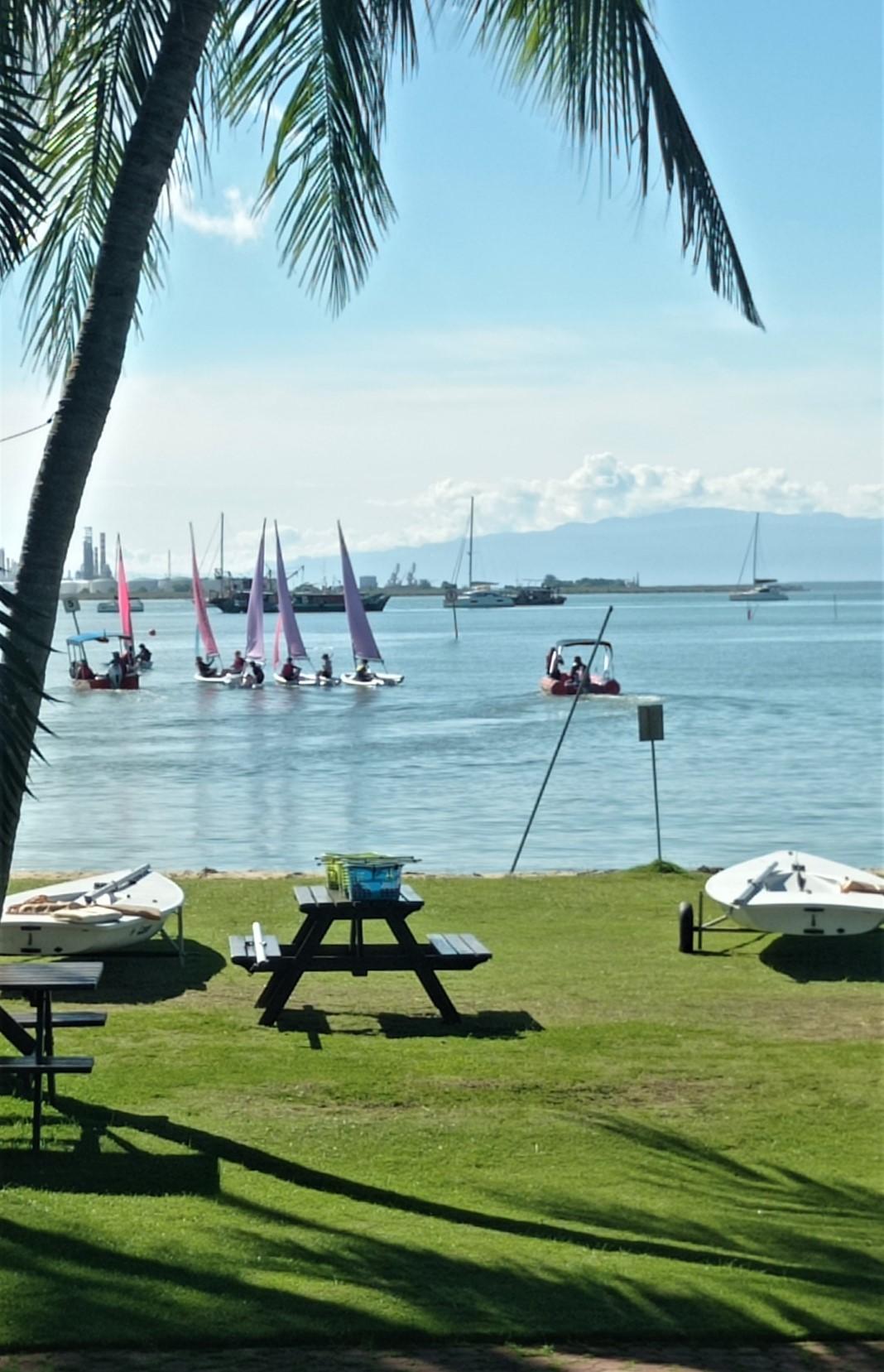
SisterShip 26
beautiful mosques, donning black djebellas to safely cover knees and ankles, followed by a visit to one of the stilt houses in the Water Village for refreshments. Faizal, our guide, was full of praise for his Sultan; a beneficent ruler; no taxes and very highly subsidised services in health, education, cars, and petrol in particular for everyone. There is no public transport because everyone has a car, and the standard of living appears to be above average. We made a quick stop to buy provisions at a very upmarket supermarket selling many international goods. Having done many tours on our travels we rate this one highly.
Now we are well provisioned and topped up with cheap Brunei diesel we are set to sail north to our next destination of Kota Kinabalu, maybe stopping at the duty-free island of Labuan. Part 2 (page 38) is about Sabah, and the voyage where we are escorted by ESSCOM around the top NE part of Borneo. Should be exciting!
For information on this rally see: https://sailmalaysia.life.
Also on Facebook under Sail Malaysia.

A New Zealander by birth, Gina has been sailing full time on her monohull, a Gib Sea 47.2 with her husband Christian Selaries for the past 15 years. They set sail from NZ in 2005, sailing the South Pacific, Papua New Guinea twice, Australia to Indonesia twice, exploring Borneo, Thailand and Malaysia, and the South China Sea.
Sailing was a huge change from the career Gina enjoyed as university lecturer in marketing, innovation, and entrepreneurship, and as CEO of her business consultancy, Masters Consulting. She continues her work as a Life Coach. Her newest adventure is as book author, having previously had articles published in sailing magazines in Germany, USA, Australia, and NZ. Gina’s aim in life is to inspire and support women in particular, to make the ‘leap’ to a more adventurous, fulfilling life.
www.bluewaterwomen.com
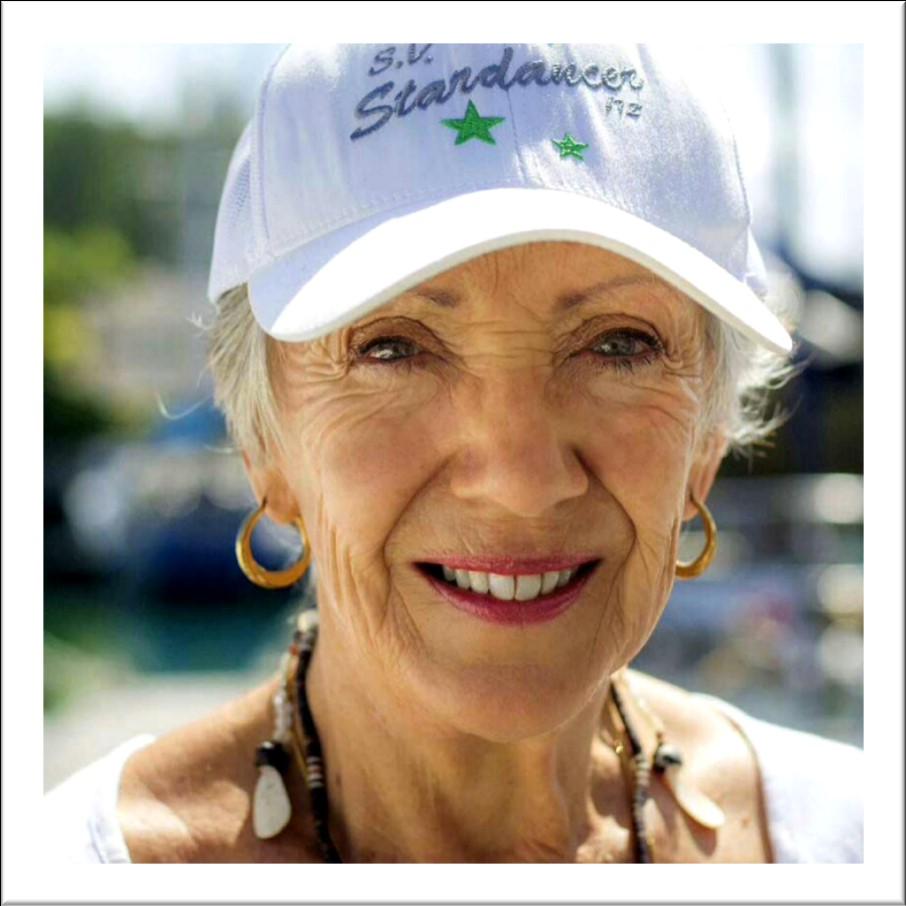

SisterShip 27
In her mid 30s and trying to make sense of her floundering relationship, Regina is restless. Throwing caution into the wind, she books herself a one-way ticket to the Caribbean and joins the crew of a small, vintage racing yacht to satisfy her growing appetite for adventure.
Once aboard the old yacht in Antigua, Regina and her fellow crew members work tirelessly under the watchful eye of its cantankerous owner, as they prepare for the passage back to Australia.
During a sultry sunset party on a clifftop, Regina encounters an alluring man. When her sailing trip is abruptly cancelled, Regina sets course for Europe aboard another boat, leaving the budding romance in her wake.
Released from former ties and without a home, Regina returns to the Caribbean. She moves into a rustic shack and as the only white resident in the tiny community, she must forge a new path.
A new life beckons, but are her dreams worth abandoning the comfort and security she has back home?
This is a true story of Regina’s wanderings in the Caribbean, her passion for sailing and the unexpected, of love lost and found, and her search for freedom.

www.reginapetrameyer.com

SisterShip 28
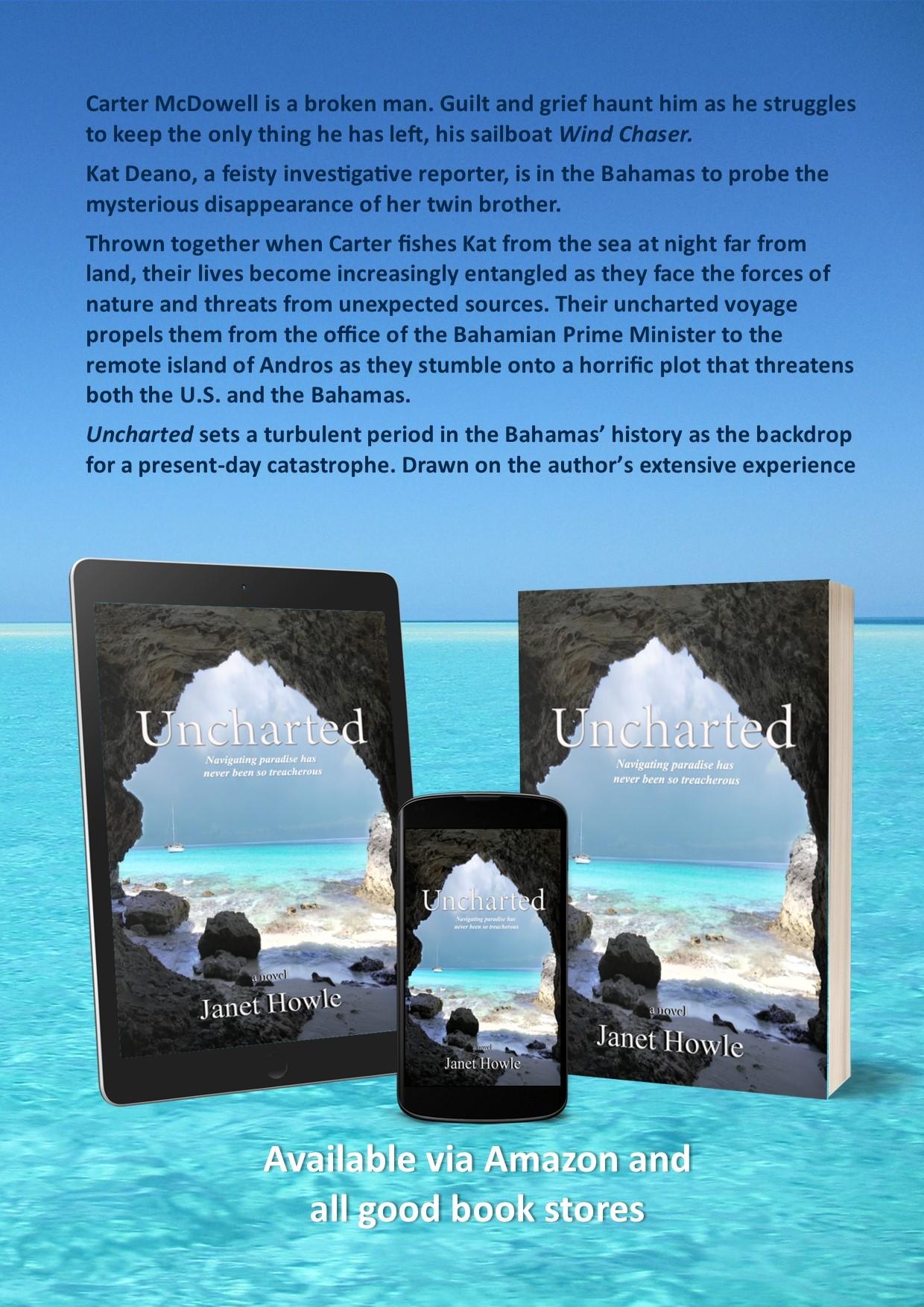

SisterShip 30

Inspiration from the Galley
An interview with Fabiola Hirschhorn
By Erin Carey
You wouldn’t be blamed for thinking that cooking and sailing, or cooking while sailing, are not two of the most compatible activities. Boiling pans of bubbling sauce sloshing around on open seas, the chef strapped in with a galley belt, narrowly avoiding scalding each time the boat makes an unexpected lurch or lunge.








Luckily, the picture I am painting is far from Fabiola Hirschhorn’s experience as the first mate and chef aboard their luxury 45-foot Lagoon catamaran LUNA. LUNA is a charter yacht, sailing the serene waters of the Virgin Islands and its surrounds. And, given the fact that LUNA is a catamaran, Fabi doesn’t even need to use fiddles to hold her pots and pans in place.

Fabi, as she’s known to her friends and guests, is an island girl at heart. She was born
and raised in Puerto Rico and was gifted a cookbook at the age of ten. This small and seemingly inconsequential gift was the inspiration to want to be a chef when she grew up. However, life got in the way, and it took a 16-year career in wealth management before Fabi would have the push she needed to finally achieve her dream. Fabi, now in her early 40s, lives aboard LUNA full-time with her husband Nim. Instead of high heels and boardroom meetings, her life now consists of bare feet and cocktails in the cockpit at sunset.
But her story really started when she was a child. Fabi grew up around a carefree family who loved to sail, and boating was in her blood. However, it was also expected that she would study, so besides mucking around in boats, Fabi achieved a bachelor’s degree in business with a major in finance and
SisterShip 32
marketing and an MBA. After graduating from university, Fabi scaled the corporate ladder, eventually reaching chief of staff. But something was missing.
“During my tenure in wealth management, I worked considerable hours, sometimes even on weekends. Although I enjoyed my time and appreciated my colleagues, it came to a point when I was no longer happy and fulfilled. I craved something more meaningful than spreadsheets, office politics and PowerPoint presentations. I wanted to do something that ignited my soul and passion.”
So when the chance arose for Fabi and Nim to do something daring, they decided to grab it with both hands. Nim had bought a Jeanneau 49DS in Croatia and they both lived aboard in a marina in Florida while they built their charter yacht company on the side.
night building the new company, their opportunity came to quit their high-flying jobs and sail away.
I sat down with Fabi to learn what she loves about cooking and catering to guests aboard LUNA.

Have you always loved cooking? Do you remember what sparked your love for cooking?
I have loved cooking since I was very little. It has always interested me, and I have great childhood memories of cooking with my father and grandmother. I watched cooking shows like Julia Child, Jacques Pepin, and Martin Yan.
My favourite time growing up was planning a special holiday menu and cooking it; I happily adopted that responsibility in my family. It was therapeutic for me! Now that I work as , I get to do what I
SisterShip 33
Fabi.
love daily. It used to be my hobby, and now I can do it for a living. It is gratifying to serve good food you have cooked with lots of passion and love and see people’s faces as they are enjoying it.
What are some of your favourite dishes youcreateforguests,andwhy?

I love exploring the islands for food. The whole process of shopping for ingredients is part of the inspiration. There is something magical about wandering through the local markets, listening to the sounds of busy vendors and haggling buyers, the visual appreciation of the raw ingredients and, of course, the Caribbean fragrances that entice you even with your eyes closed. My cooking style is inherently simple; I like to keep the essence of the ingredients. If you want a great-tasting dish, it’s essential to have the freshest ingredients.

I’d describe my dishes as comfortable, healthy
and simple. They are all accented with flavours synonymous with the Caribbean, such as creamy avocados, sun-ripened tomatoes, garlic, and citrus juice. I love playing with fragrant herbs like cilantro, culantro, and oregano.
I design the menus for each charter based on the guest preferences disclosed upon booking. The menu is not static. Sometimes, I’ll pop into a local market and find some delicious fresh fish, meat, and vegetables. I’ll upgrade the menu to incorporate the new ingredients. Occasionally, our guests might catch a fish, so I’ll include this in our lunch or
SisterShip 34
dinner dishes, or even both if it’s a huge catch.
I consider myself a versatile and very flexible chef. I’ll work closely with our guests to create a personalised charter menu. I enjoy using locally grown ingredients and work hard to incorporate a farm or sea-to-table approach in my cooking. I strive to support local communities and use healthy and wholesome nutrition in my meals.
What are some of your most loved/ requesteddishesbyguests?
At the end of each charter, we ask our guests about the highlights of their Sail LUNA experience and if they had a favourite dish. It seems to be a tricky question; our guests often say it’s impossible to name just one, so they name their top five.
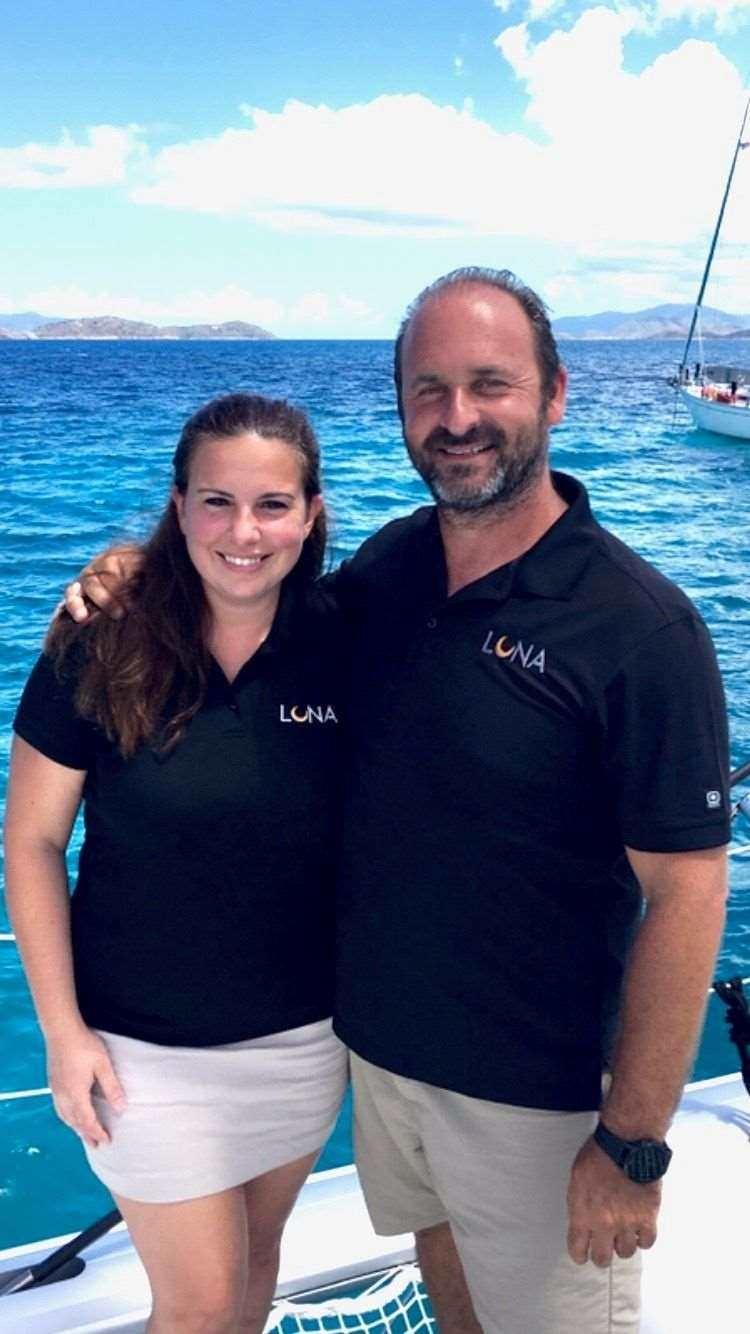
There are a few firm favourites. One that always appears in the top five dishes is the fish tacos. I’ve heard, “they are the best fish tacos I’ve ever had” many times! I prepare them with line-fresh Mahi Mahi marinated with a blend of garlic, paprika, the juice and zest of a lime, olive oil, salt and pepper. I make a crunchy and light slaw with shaved red cabbage, small diced yellow bell peppers, jalapeño, cilantro, a little cumin, salt and pepper; it’s dressed with lemon juice and olive oil. Once everything is prepared, I pansear the fish and serve it with chipotle aioli and crunchy onions. They are delicious and go down a treat.
Why do you prefer to source local ingredients and how do you go about sourcingthem?
Fresh produce and ingredients are essential not only because they taste great, but so we can support local small businesses. They offer great products and are transparent about their sources. You can’t beat face-to-face visits, not only so you can build and nurture relationships but you can be honest and
express any concerns you may have. I always like to go shopping myself; I have very exacting standards! It’s important for me to choose the ingredients because I will be cooking during the charter week. I also have a garden on the boat where I grow my own herbs and microgreens. I use them in my dishes, and Nim uses them in his craft cocktails.
Can you explain a bit more details about your global cuisine cooking style and influence from a life well-travelled? What isyourfavouriteregionalinfluence?
Many of the ingredients I cook with are inspired by our Caribbean, European, and Mediterranean heritage (my husband is from Israel). I enjoy trying new dishes, discovering new ingredients, visiting a local market, street vendor or restaurant, and watching locals prepare their food.
My cooking style is a blend of international,
SisterShip 35
Fabi and Nim.
with a generous hint of Spanish and Italian cuisine. I tend to showcase light, fresh, flavoursome and local ingredients in my dishes. I love challenging myself by playing with different styles and blending the old with the new.
Explain a few challenges of becoming an award-winningchef onthehighseas?
On a boat, you have limited space, tools, power, storage, and availability of products; you need to be able to work magic with what you have. Planning is crucial. Once you are on charter, you can’t pop into your local store for provisions. You learn how to be flexible and improvise.

Husband and wife team Nim and Fabiola Hirschhorn charter Sail LUNA, a stunning customised 2019 Lagoon 450S, around the Virgin Islands in the Caribbean. For more information about their charter holidays, please get in touch withthemviaemail.
Erin Carey is the founder and director of Roam Generation, the only PR agency in the world run from a yacht. Roam Generation shares the inspiring stories of travel and adventure-related brands and experts from around the world. www.roamgeneration.com

SisterShip 36


SisterShip 37
South East Malaysia Rally 2023
Gina de Vere



PART 2: Kota Kinabalu to Kudat, Sabah

It was a pleasant shock to the system to sail into Kota Kinabalu on our boat Stardancer to find the luxury of Sutera Harbour Marina. Since we left Brunei on 6 July with full diesel tanks (fuel is a ridiculously low price) we had slalomed between huge oil and gas rigs for a while around the coastal area. Because of the unmarked and disused wellheads, sailing here at night is not recommended.
We had been looking forward to sailing north to Kota Kinabalu, once known as Jesselton, in the state of Sabah where we had friends to visit, so this time we did not stop at the dutyfree island of Labuan, just north of Brunei Bay. It is however, a pleasant stop to provision; a small marina and a marvellous fresh market.
The sea was confused and we were expecting the edge of a typhoon that was making its way south from the Philippines. At night we had thunder, lightning, and heavy rain, with cloudy overcast days. This type of weather was not expected, as we were told countless times, this is usually the dry season. However, SE Asian countries have mostly had more rain and an extended wet season this year.
We made haste north, not stopping at Pulau Tiga which is a favourite rally stop, and arrived on 9th July in time for birthday celebrations in Kota Kinabalu. I could have stayed in the sumptuous Sutera Harbour a lot longer. It is an expensive marina, but the complex, which faces the South China Sea, contains two five star hotels, 104-berth marina, a 27-hole award winning golf course
SisterShip 38
and five swimming pools (including one Olympic sized pool) as well as a selection of restaurants and cafes. In fact, it’s a village on its own. (see www.suteraharbour.com/golfmarina)
Our only disappointment was that we didn’t have the time to really enjoy the facilities; instead we were trying to source new batteries, get the hull cleaned (ask for Lionel), have a patch put on the spare genoa (ask for George), topping up the fuel, finding a laundry and re-provisioning. In the evenings we were busy with rally meetings about our upcoming security escort around the tip of Borneo, dinners, and events, but some rally participants made it down town to the waterfront which buzzed with music, bars, and restaurants.
In the 15th century KK, as locals call Kota Kinabalu, was part of the Brunei empire. It is also known as “The Land Below the Wind” because of its position below the typhoon belt. Scotsman Alexander Dalrymple reached


SisterShip 39
ABOVE and BELOW: Sutera Harbour.
the Sulu Sea in 1759, although active trading with the British was not until 1881 when the British North Borneo Company obtained land grants from nearby sultans. During WW2 KK was occupied by the Japanese, and in 1946 it was granted British crown colony status and Sabah is now part of Malaysia. This is strongly contested by the Philippines and occasional aggressive conflicts erupt. This is why it is good to be on the rally and have the escort of the East Sabah Security Command (ESSCOM) as we sail through these waters.
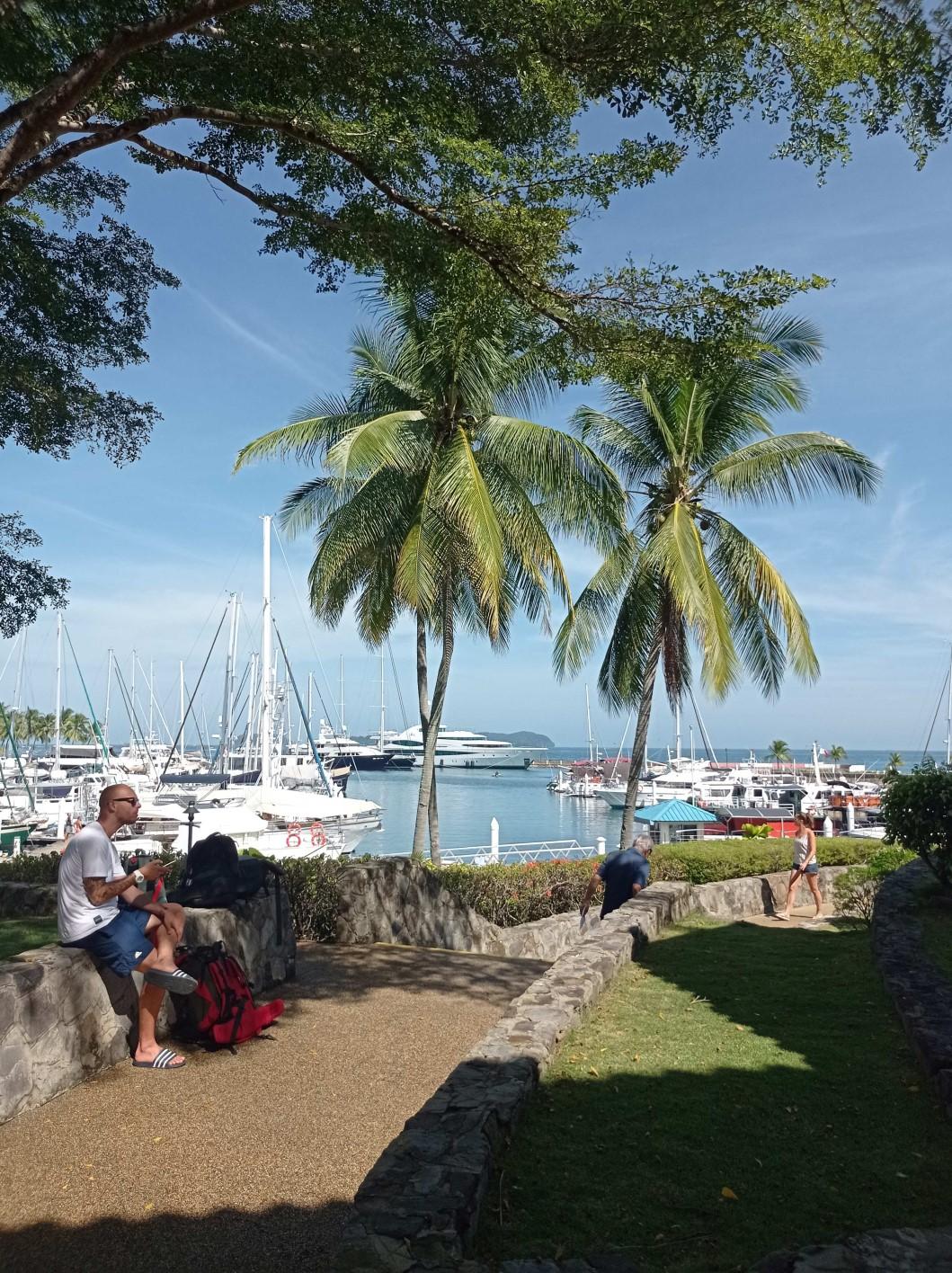
One cannot be in KK without being aware of Mt Kinabalu at 4,095 metres. Many tourists come to trek on the mountain or in the huge Kinabalu Park, 754 square kilometres, to hopefully see orangutans, deer, the Malayan weasel and if very lucky, a leopard. The weather was showery but a yachty friend and I hired a driver for the day to take us up to the Sabah tea plantations up the mountain. It was a two-hour drive with

SisterShip 40
ABOVE and BELOW: Sutera Harbour.
the most of it spent in endless bends. We were glad we were not driving; it gave us time to gaze in awe at the stupendous scenery, mountain range after mountain range disappearing in the distance as we climbed ever higher. When the cloud lifted for a few moments we could see the top of Mt Kinabalu, still a lot higher than we were. As we reached Sabah Tea House in Ranau, via Kundasang, it was lunchtime (we did stop for coffee and photos en route) but it was full of tourists in the restaurant. I never got my lunch; we ran out of time waiting nearly one hour. We carried on to see the Botanical Gardens, only the rain came down and we couldn’t see anything, so did not even get out of the car. Still the seat was comfortable and the views superb!
Shopping malls abound in KK. Many of them are stocked with high-end goods and western foods but my favourites are the small Kedai where one finds hardware that may fit the boat. Finally, we left our berth on 21 July feeling good. I love that feeling when we sail out of port with the boat full of our provisions, fuel, and water, looking forward
Kinabalu.
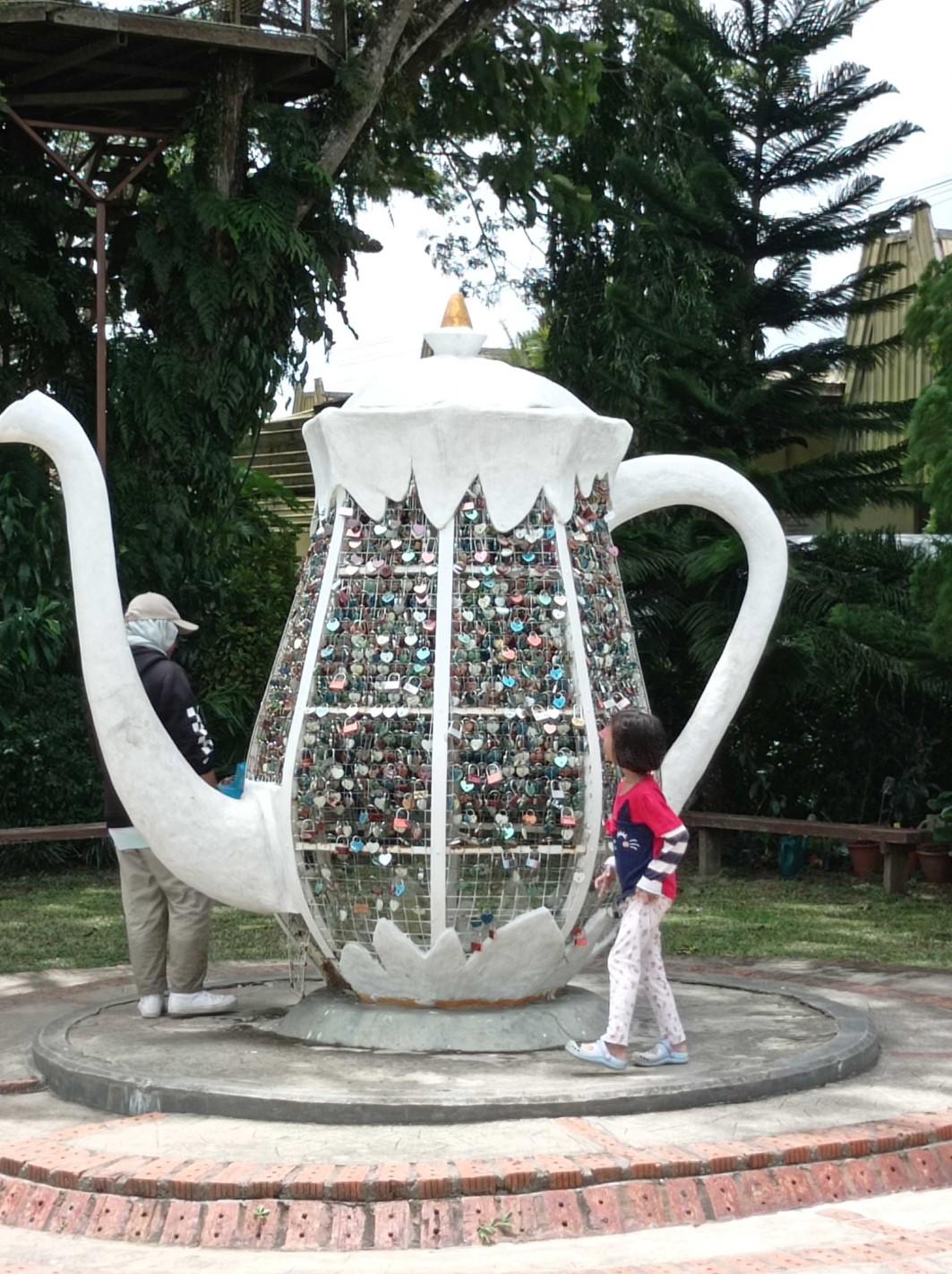


 ABOVE: Kinabalu.
BELOW: Sabah tea.
ABOVE: Kinabalu.
BELOW: Sabah tea.
to the unknown and more adventures. We had no wind and motored all day on our way north to Kudat, whereas the next day we were flying along touching 9.5 knots.
We sailed around the tip of Borneo and arrived in Kudat three days later, on 24th July, anchoring off Kudat town opposite the clock tower, in 10m mud (06 degrees 52’.63N 116 degrees 51’.23E). We could have stern tied Stardancer to the wall in the Duck Pond, as it is called locally, at the Marina Jetty which has good facilities, but we preferred to be within walking distance of shops and the Harbour Master, Customs, and Immigration. It is a friendly little town and we enjoyed our short time there. It is only three and a half hours drive from Kota Kinabalu but Kudat seems much more of a backwater; it was settled by the British in 1881, with the British North Borneo Chartered Company signing a Peace Treaty with the indigenous Rungus peoples. Hakka Chinese workers were encouraged to come and settle as Kudat trade prospered and it became the state capital which was later moved to Sandakan and now is Kota Kinabalu.
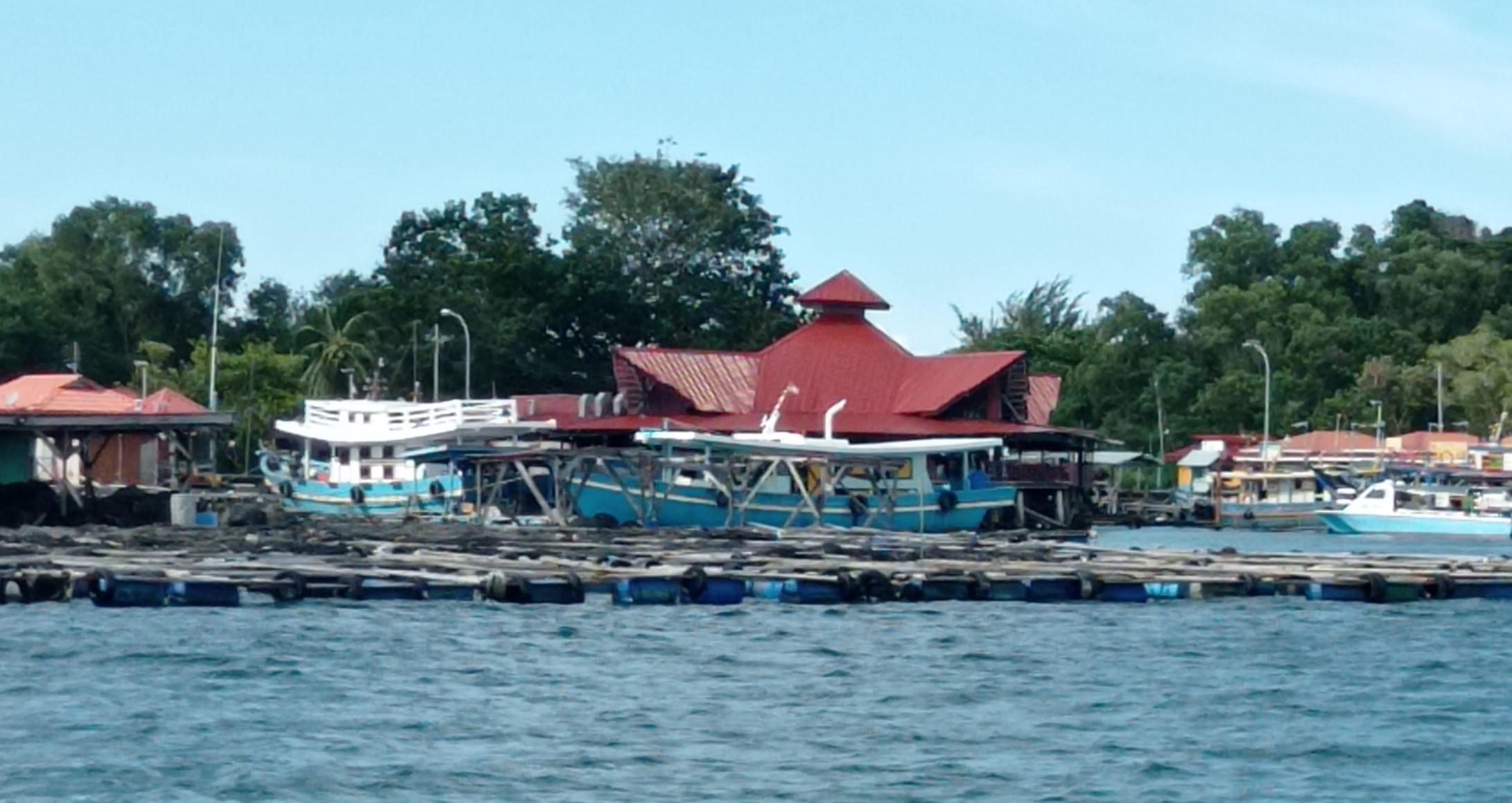
After another rally dinner and briefing, we are now preparing Stardancer for the next legs, where we take several days to go up the Kinabatangan River, still with ESSCOM alongside, into the heart of the jungle to see proboscis monkeys, crocodiles, deer and colourful birdlife. But first another encounter with wildlife, in the Turtle Islands, where we were invited onshore at night to see the

SisterShip 42
BELOW: Kudat Anchorage.
turtles hatching. Seeing them lay their eggs was a first for me and watching the little ones scurry for the safety of the sea was memorable. The next six days would be spent exploring the mighty Kintabatangan river. More about this in the next issue of SisterShip Magazine!
Formoreinformation:

Take a look at www.sailmalaysia.life and join South East Asia Cruising group. Email Mr Sazli Kamal Basha at : mail@sailmalaysia.life
For the onward connecting rally east through Indonesia, Sail 2 Indonesia, contact Mr Raymond Lesmana at: raymondlesmana@ymail.com
A New Zealander by birth, Gina has been sailing full time on her monohull, a Gib Sea 47.2 with her husband Christian Selaries for the past 15 years. They set sail from NZ in 2005, sailing the South Pacific, Papua New Guinea twice, Australia to Indonesia twice, exploring Borneo, Thailand and Malaysia, and the South China Sea.
Sailing was a huge change from the career Gina enjoyed as university lecturer in marketing, innovation, and entrepreneurship, and as CEO of her business consultancy, Masters Consulting. She continues her work as a Life Coach. Her newest adventure is as book author, having previously had articles published in sailing magazines in Germany, USA, Australia, and NZ. Gina’s aim in life is to inspire and support women in particular, to make the ‘leap’ to a more adventurous, fulfilling life.
www.bluewaterwomen.com
Gina’s book Blue Water Women is available at Boat Books in New Zealand and Australia, Amazon and Barnes and Noble, and Inde Books in USA and Canada.


SisterShip 43
Trim Tales: The Ship’s Cat
By Lyn Battle
We’d brought our little aluminium catamaran Trim into Cairns Marlin Marina for a couple of days as there was a big blow forecast. The large monohull next to us looked like a longterm live-aboard and we’d noticed them covering up their pot plants after we arrived, which had us wondering that surely, they weren’t expecting the wind to be THAT bad?!
“So how often do you let the cat off the boat?” the yachtie next to us asked rather bluntly, as I stepped down onto the dock.
I smiled at him as I realised he was referring to our mascot ship’s cat Trim – a plastic replica of Matthew Flinders’ faithful companion, covered in (the label assured us) “ethically sourced rabbit fur from China…” The snoozing feline was a gift from our friends Jock and Sue, who had bought him in a nautical shop in Noosa, part of a ‘Ships Cat’ collection, and they themselves owned a replica of Shackleton’s ‘Mrs Chippy’. Trim has voyaged the Coral Coast with us and had lots of adventures over the years. I often move him around the boat and although his snoozy posture never alters, I guess our neighbouring boaties must have thought he was moving around by himself!
“Oh! That’s not a real cat!” I pointed through the window to where Trim sat, looking quite lifelike I had to admit. I reached in to lift him out – “It’s just a plastic one covered in rabbit fur! See?”
Our neighbour seemed unconvinced but when I turned it upside down to display the base sticker telling the story of Flinders’ intrepid ship’s cat, he relaxed and nodded curtly, “That’s all right then. The last boat here that had a cat, was having kittens and it came and dug up all our pot plants!” Gardencovering frenzy explained…
When we read the old stories of tall ships and maritime exploration, or look at old sketches and paintings, they often feature the ship’s cat – whether twining precociously around the captain’s ankles, or skulking in the background hunting rats and deck-scraps.
So when did the ship’s cat become ‘A Thing’? Believe it or not, cats have been working on ships for thousands of years.

Genetic and archaeological evidence now date the first domesticated cats back about 8,000 years to a small wildcat species Felis sylvestris (Felix and Sylvester the cats!?). Dogs had been domesticated much earlier to assist with hunting, but it was only when humans settled into crop-growing communities around the ‘fertile crescent’ adjacent to the eastern Mediterranean, that cats emerged from their aloofness and deigned to grace us with their presence. With the advent of stored grain came mice, and a mutual relationship began, with humans feeding scraps to the cats who killed the mice.
By about 4,000 years ago these enterprising felines had worked their way across the Middle East into Egypt and there they found Cat Paradise. The Egyptians initially revered
SisterShip 44
the big cats like leopards and cheetahs, believing them to be lucky, magical, and sometimes even inhabited by the gods. As the smaller wildcats grew tame, the Egyptians kept them as pets, mummified some of them when they died, and brought them on board when they plied the river Nile, catching shore birds for their crew. Hieroglyphics show that this progressed to trading voyages around the Mediterranean, where some of these first Ships’ Cats jumped ship to expand their territory, and some stayed on board to perpetuate the seafaring tradition. DNA from an Egyptian cat has been found to match DNA of cat remains found at a Viking site in Germany, and cats feature prominently in Norse mythology.
During the Age of Discovery from the 15th through the 18th centuries, when traders and explorers sailed the seven seas and beyond, the ship’s cat was an essential member of the crew. The most important role was controlling vermin. Rats and mice on board ship didn’t just nibble on foodstuffs, but also chewed ropes – potentially disastrous on sailing ships. They have even been known to nibble on the calloused skin of sleeping sailors’ feet! They also chew timber and electrical wiring. We’ve seen what possums can do to our wiring on board MV Trim, so I’d hate to have rats on board – we’d definitely need more than our replica cat to take care of them!
The forerunner to our modern Maritime Law, ‘Il Consolato del Mare’, published in Barcelona in 1494, declared that if the ship’s master kept cats on board, he could be excused from the liability of damage from rats, which effectively provided the vessel with cargo insurance. And during the 17th Century, Louis XIV ruled that all ships in the French Nay carry two cats for rodent-control duties.
Rats were also carriers of disease so having a cat or two on board increased the chances of a healthy crew. It is thought that rats on
board ships contributed to the spread of the Black Death (bubonic plague) in the 14th century.
Cats weren’t just useful at keeping the rodent population under control; they were also believed to bring the vessel good luck, especially black cats, and sometimes fishermen’s wives would keep a black cat at home in the hope that this would protect their husband while at sea. If a cat approached a sailor on deck, it was considered good luck, but if the cat only approached halfway and turned back then that was a bad omen. Polydactyl cats with extra toes were considered extra lucky, possibly having more toes gave them better balance and in some places, they were known as ‘ship’s cats’.
The static electricity that builds up when stroking a cat’s fur led to the belief that cats could conjure up storms with their ‘magic wand’ tails – if it started to twitch, thunder and lightning was imminent! If the cat licked its fur ‘against the grain’ then hail was forecast, and if it sneezed you could expect rain. A frisky cat meant wind was coming, and indeed, many of these omens were based

SisterShip 45
on fact. Cats have specialised inner ears, enabling them to turn in mid-air and land on all fours when falling. They can detect changes in barometric pressure, and will often become restless, displaying behaviour that an observant sailor could interpret as weather omens.
Apart from their usefulness, cats were also a great comfort to sailors during long voyages. They provided companionship and entertainment, uniting the crew in caring for a mascot and boosting morale.

After their ship sank in the North Atlantic, a group of survivors spent 56 hours on a liferaft before they were rescued. One crewman said that if they didn’t have the ship’s cat Maizie with them they might have gone nuts. “We completely forgot our personal discomfort and almost fought for the privilege of petting her.”
Studies have shown that petting cats can reduce stress and anxiety. This bonding has resulted in some sailors going to extraordinary lengths to protect their ship’s cats.
As sailors know, it’s no mean feat to bring a sailing boat up short. When Alan Villiers was sailing his fully rigged ship the Joseph Conrad in the South Pacific, he risked his ship for a cat. The crew had acquired twin kittens in the Solomon Islands, naming them Joseph and Conrad. Conrad was a daring little ginger Tom and had a habit of lying in wait on the mizzen channels to pounce on flying fish. One squally day he fell in, and the only way to halt the ship was to ‘back the main’ by letting the wind fill the ‘wrong’ side of the sail – a risky manoeuvre, particularly on a tall ship, that could rip sails and snap timber and cordage. Villiers recalls how he stood watching the little kitten trying to swim back to the ship, when a large albatross swooped down on him, and the brave kitten swiped his tiny paw at the sharp beak. “I could not leave a cat like that,” said Villiers, giving the order,
the rescue boat launched. After twenty minutes of rowing in turbulent seas the cat was found, the sailors taking off their jerseys to revive him in the cold wind. He was even permitted into the warm galley for a day until he recovered.
The Norwegian cargo ship Rinda was torpedoed and sunk during World War II. When the surviving crew realised that their beloved ship’s cat wasn’t on board the lifeboat, they rowed around in the dark until they heard a ‘miaow’ and soon lifted the soggy moggie onboard. The cat was later adopted by the armed trawler that had rescued the crew and was renamed ‘Rinda’ after her former vessel. “We rowed as hard as we could and laughed and cried when we lifted the sopping wet furball aboard”, said the First Mate.
Possibly the most amazing story comes from a ship’s cat known simply as ‘Puss’. She was crew on board the Norwegian cargo ship Hjalmar Wessel during WWII and used to go ashore at every port, returning in the nick of time before departure. Alas, one day she failed to show for duty as the ship prepared to depart North Africa for Italy. The crew delayed as long as they could but had to sail without her. They made several return trips
SisterShip 46
between Algiers and various Italian ports before steaming into Barletta where a crewman was astonished to see an injured Puss crawling up the gangplank! Sadly, she had a nasty wound on her back and the chief engineer, whom she used to follow around the ship, took her to his cabin where she died the next day. She must have hitched a ride across the Mediterranean but who knows how many ships, and how many ports she visited in search of her vessel. Thank goodness she found them and died in the arms of her beloved crew. As befitting a favourite crew member, she received a prayer and burial at sea.
As time progressed, fumigation methods improved and lessened the need for cats as pest control. Quarantine laws also meant that wandering feline crew could result in hefty fines for the skipper. The British Navy officially banned ship’s cats in 1975, based on ‘hygiene grounds’. Most of the world’s navies followed suit, with the cheerful exception of the Russians, who flaunt their naval cat crew pix online. According to the Russian Navy, personnel are allowed to keep animals on board with the permission of the ship’s commander and they must be removed if they develop any disease dangerous to human health or are seen to be mistreated.
Some merchant vessels still have ship’s cats and of course they are a favourite with cruising yachties. Port authorities may require to see vaccination certificates for rabies, some won’t allow pets ashore, and of course most National Parks are out of bounds, but with care and consideration, the ship’s cat is still a very important member of the crew.
One of the world’s biggest and newest cruise ships Celebrity Beyond has its own celebrity ship’s cat. Captain Kate McCue is the first American woman to captain a ‘mega’ cruise ship and she usually shares her cabin – and sometimes the bridge – with her hairless sphynx cat Bug Naked (!) who often features on Instagram, posing for selfies with
passengers.

Here in Australia, we have our own celebrity Captain Sarah who has sailed many seas with her beloved ship’s cat Trim on board the tall ship Windeward Bound. This magnificent ship was built by Sarah and her team and takes passengers and trainees on board to experience the magic of sailing. Trim has welcomed and entertained thousands of visitors over the years, including here on Sweers Island. They called in during their circumnavigation of Australia in 2002, to commemorate Matthew Flinders’ voyage, completing the circle, as Flinders’ cat Trim would probably have been the first cat to visit the island. Like her namesake, Sarah’s Trim once fell overboard but didn’t hesitate to clamber up the anchor line back to safety. After 15 years as crew, Trim has gone aloft to ship’s cat Heaven, but she leaves behind fond memories and a strong tradition.
Which brings us back to our own Trim – the vessel and the replica ship’s cat. Long may they sail the seas. Fair winds to all.
Lyn has always loved the sea. She grew up in Ireland, moved to Australia aged 23 where she met and married Tex. Together with friends, they built a small fishing lodge on remote Sweers Island in the Gulf of Carpentaria, where they’ve been welcoming guests for over 30 years. Lyn dabbles in everything: a bit of sailing, a bit of yoga, a bit of kayaking, a bit of writing. In 2018 she succeeded in becoming the first person to paddle a kayak nonstop around the island.

SisterShip 47
Flat-bottomed girl

Views from the canal
VALERIEPOORE takes the helm of our regular barge boat column.

Taking the Scenic Route
Vereeniging, from Rotterdam to the small Brabant town of Oudenbosch in South Holland. Unlike Rotterdam, the town’s claim to fame lies not in its busy harbours but in its basilica, which is an amazing copy of St Peter’s in Rome. There, I bet you didn’t know that, did you?
Nevertheless, after the noise and clamour of the city, I liked Oudenbosch very much, but a long-term mooring in the town evidently wasn’t meant to be. I’d been there for just a year when I was informed that the harbour fees were about to increase substantially –and that was the second time since my contract began. Realising there was no way I could continue to keep up with these increases, I started looking around for another option so I could leave when my contract expired at the end of March this year.
As luck would have it, my land base is near the village of Sas van Gent on the Dutch/ Belgian border, which has a harbour

willing to offer me a mooring, thereby cutting all my travelling costs and giving me an affordable place to keep my beloved barge. Had I not found a cheaper home for her, I’d have been faced with having to sell her, a prospect I found very hard to contemplate so I was incredibly relieved. The only problems now were how and when to make the move.
Given the inclement Dutch winter weather conditions, my partner Koos suggested we should only leave Oudenbosch at the last possible moment. The early months of this year were more than usually cold and wet and we were desperately hoping things would improve. Vereeniging has an open steering position and with no protection from the elements, we are inclined to be fairer weather farers. To our dismay, the last few days of March were truly horrendous, with high winds and torrential rain. We were dreading the prospect of setting off in a storm, but the Oudenbosch harbour master, thankfully, took pity on us.
SisterShip 48
‘The boat that’s taking your place is only coming next week, so you can stay until the weather is better,’ he wrote. Had I seen him, I’d have kissed him.
Originally, we’d planned to head west from Oudenbosch along the river Dintel and then follow the Schelde Rijnkanaal all the way to Antwerp. From Antwerp’s docks we’d have taken a lock onto the tidal Schelde (Scheldt) river and headed upstream to Gent (Ghent), and then on to Sas van Gent, just over the border. The total trip would have been around 200 kilometres.
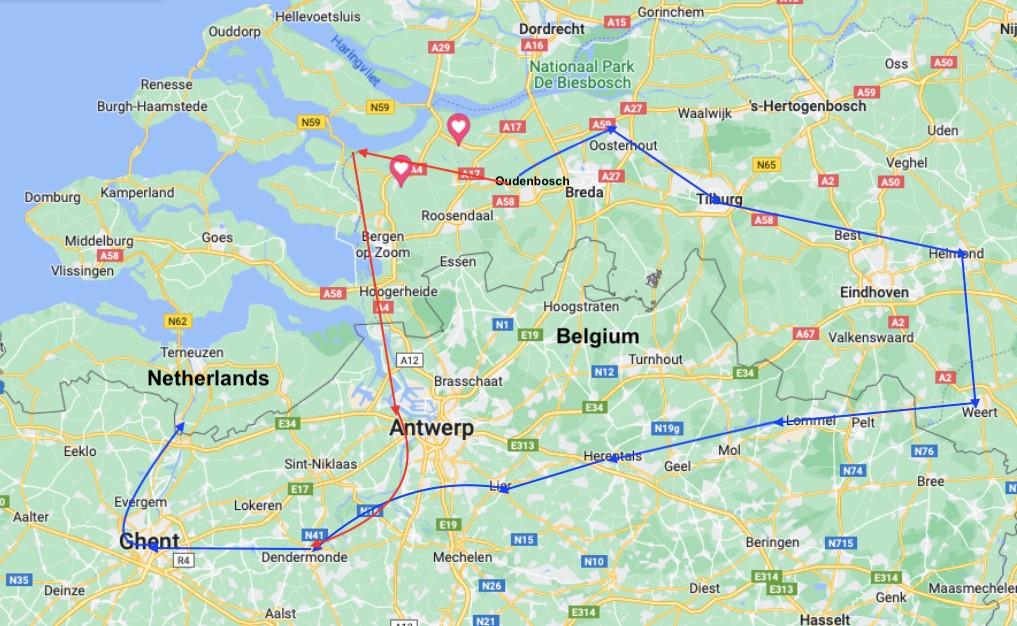
As I said, that was the plan. But plans are made to be altered and ours were disrupted completely when a good friend warned us we had to have AIS (Automatic Identification System) to go through Antwerp. In most of Europe, it’s not a requirement for boats under 20 metres long, but last year, Antwerp harbour authorities decided that all vessels passing through the city docks had to have it installed, regardless of size.
Finding this out only days before our departure meant it was impossible for us to
comply and we had to change our route completely. So it was on an icy cold, but beautifully sunny, Monday, April the 3rd, that we left Oudenbosch and headed east along the serene river Mark to embark on a 370kilometre round-trip. It was a journey that would take us beyond Eindhoven to Helmond before turning south and then west back along the Belgian canals to join the Schelde to the west of Antwerp. All those extra kilometres just because we couldn’t go through the city. However, being a glass-halffull kind of person, I saw it in a different light.
“We’ve never been that way, Koos,” I said. “Let’s treat it as a holiday and just enjoy ourselves.”
Koos muttered and grumbled a bit. He was understandably cross that we couldn’t take the shorter route, but he saw my point and we set off with pleasurable anticipation of what was to come.
That said, the trip was distinguished by a number of tense moments, the first of which occurred somewhat too soon for comfort.
SisterShip 49
We were on the Mark about an hour from Oudenbosch when up ahead we saw the main line railway bridge over the water. The bridge is movable but opening needs prior arrangement, so it’s crucial for boaters to be sure of their height in advance. Vereeniging’s air draft was low, but was it that low?

“Do you think we’ll get through with the chimney up?” I asked.
“I think so. We had it up last time we came through, didn’t we?” Koos ventured.
“I can’t remember exactly. I have a feeling we took it down before we left Rotterdam.”
“It looks fine from here,” Koos said, and I agreed. I shouldn’t have.
The closer we got the less certain we felt, until we reached the point when my jaw dropped open.
“Oooerr,” I called anxiously, stomach clenched, and ducking swiftly as we got
too and the chimney cleared the bridge by less than a whisker.
“Phew!”
“Phew indeed! I guess that proves we must have had the chimney down last time,” Koos said. “I think I’d have remembered a close call like that!” I just looked at him, bereft of speech by the shock.
He was right, though. Had the chimney been even a fraction taller, we’d have lost it completely and had a very chilly evening. The oil stove inside was very necessary for the first few days of the week.
Our next excitement occurred later in the day. We’d fared through the peaceful, albeit breathtakingly cold, pastoral Brabant countryside, negotiating three substantial locks and numerous bridges before reaching Tilburg, a well-known university city, late in the afternoon. We’d seen one commercial barge, but nothing else; not a cruiser, not a canoe and no commercial vessels at all.
SisterShip 50
Ultimate tranquillity. So it was a bit unexpected to have a tense moment at the end of such a long and relaxing day.
We’d agreed Tilburg would be a good place to spend the night, and Koos wanted to moor up in the town’s historic harbour, located in a short arm off the Wilhelmina Canal. We were warmly welcomed by one of the residents on his gorgeous luxe motor (a motor barge with a wheelhouse), and he offered to let us tie up alongside. While a very kind gesture on his part, I was hesitant to accept. He had two immaculate traditional rowing craft next to his barge, and I was anxious we might crush them with our nearly thirty tonnes of iron hull.
The cut was also pretty narrow, so turning round was an exercise in quiet, persistent patience for Koos. I, on the other hand, held my breath, uselessly praying we wouldn’t hit anything. Not only were there pristine rowing
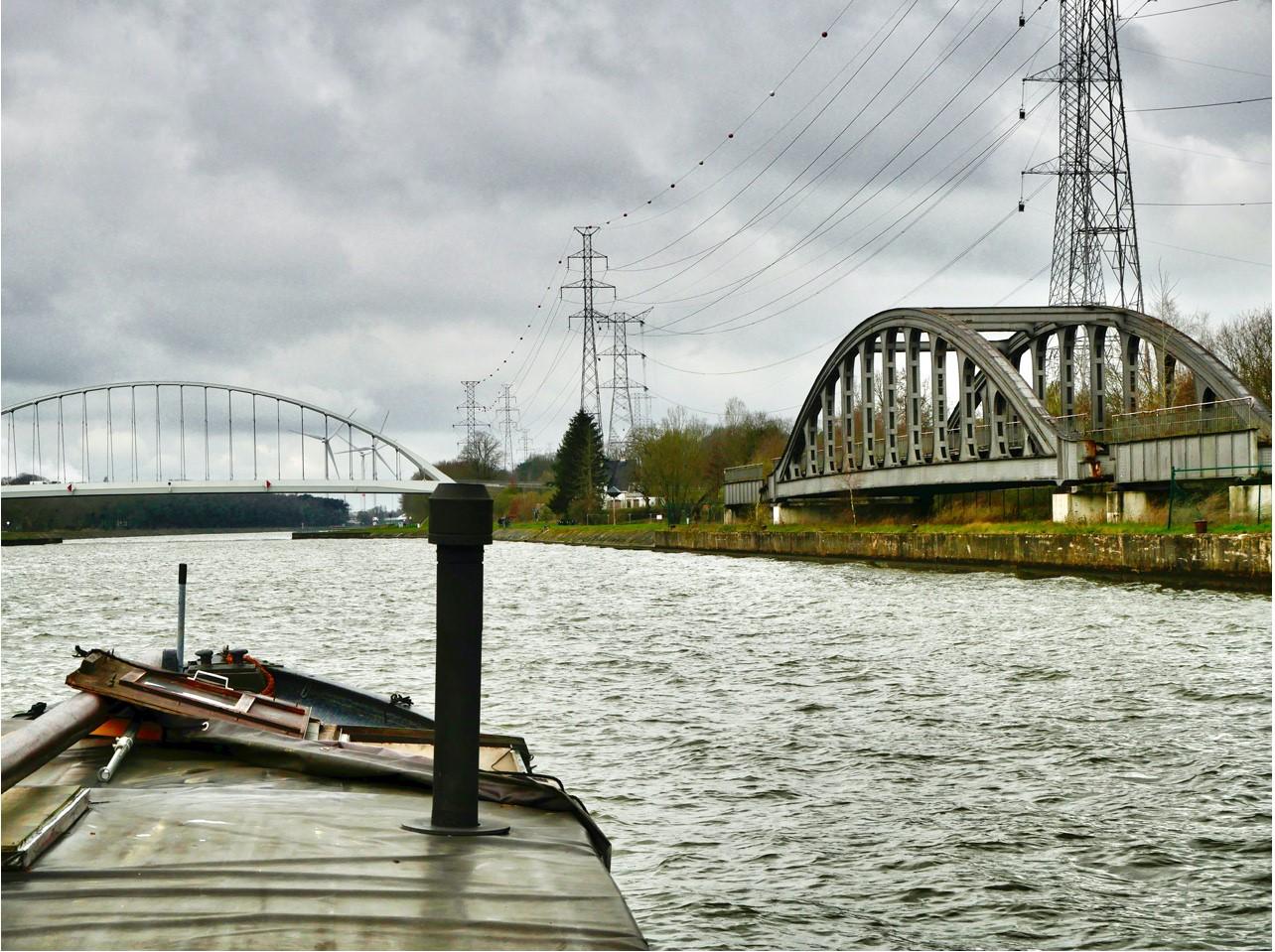
boats next to our host’s barge, there was also a pontoon where young people were enjoying the late afternoon sun.
My heart was in my mouth, but taking things extremely slowly, the gentle nudges we gave the pontoon caused no disturbance to the sun seekers. I released my breath and Vereeniging drifted into place next to the luxe motor after a day of steady faring. Our neighbours were exuberantly enthusiastic about my beautiful Vereeniging and delighted to have us there; their kindness was heartwarming and relieved the stress of our arrival.
The following morning, we left at 10 a.m. to allow for the ice to clear from the decks. It was another sparkling, sunny start but with far less of the harsh wind that had been hard to endure the previous day. By the end of the afternoon, we’d reached Helmond on the Zuid-Willemsvaart for our second night’s
SisterShip 51
stop and had been through a mere two locks, but so many bridges I lost count.
By-passing busy Eindhoven, we were content to moor up before a lock on the old canal that went through Helmond’s centre. This was familiar water, as Koos and I had stayed here back in 2005 when we were on our way to a festival in Belgium. But what we’d forgotten was the narrow (again) width of the cut, a restriction that was to give us yet another tense moment when we left.
We both slept like babies that night, tired from the long, cold hours on deck but content with the non-stop sunshine we’d been blessed with. In the morning, however, our departure from Helmond took much longer to achieve than we’d hoped.
“We’ll have to reverse out of here,” Koos said, somewhat glumly. “I thought it was wider than it is.”
“Hmm, last time we moored closer to the exit. There’s definitely more space there.”
“Yes, but we weren’t given that option this time.”
The lock keeper had told us to tie up as close to the lock as possible to leave room for a commercial barge stopping for the night.
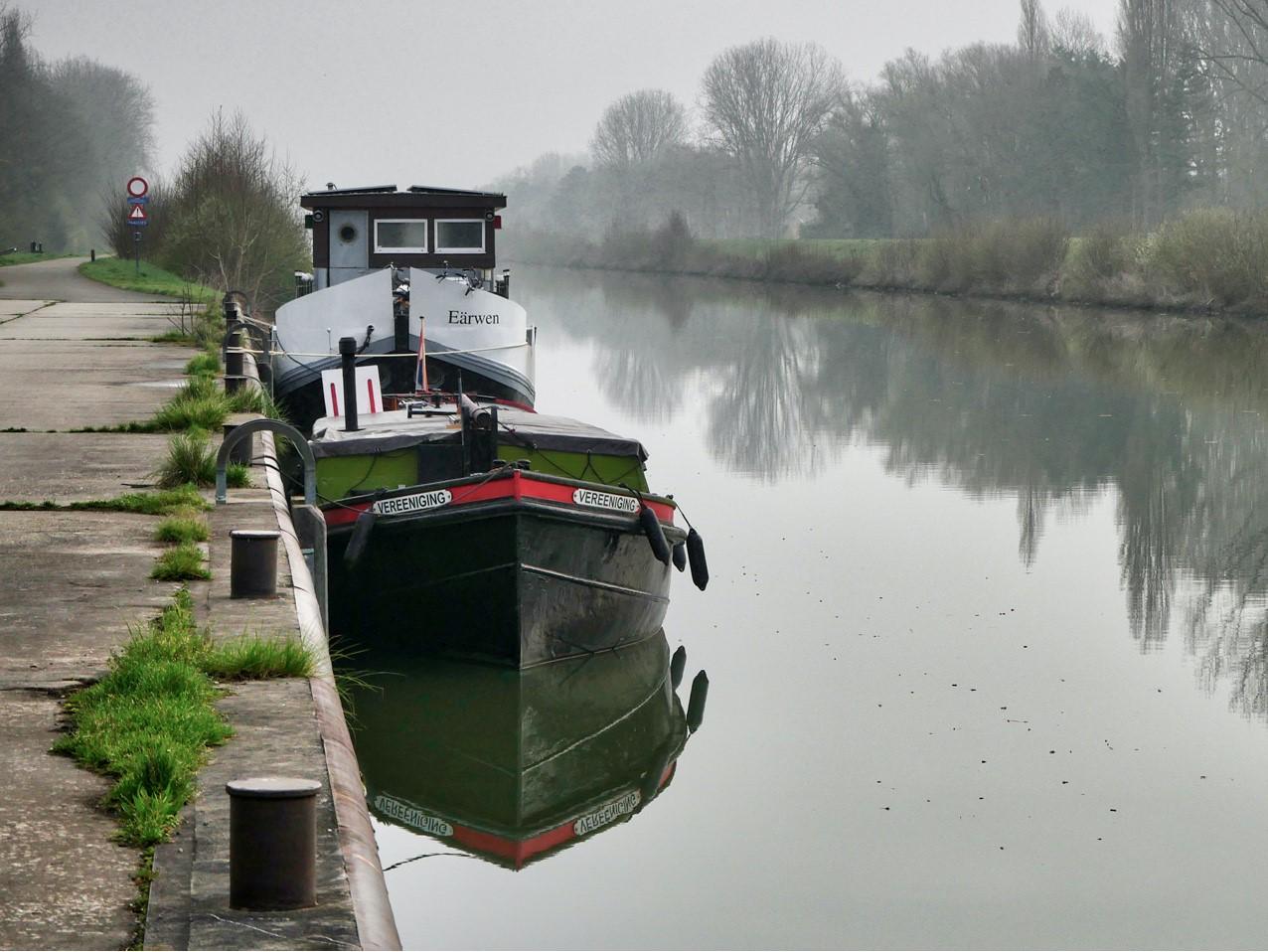
“Right,” I said, “I’ll put the kettle on. By the time you’ve backed out to the wider section, you’ll be ready for some serious caffeine.”
“And a shot of something even stronger, I suspect.” Koos saw the surprise on my face. “Just kidding,” he said.
Koos complained volubly about the reversing power, or rather lack of it, in Vereeniging’s antique Samofa engine, but we slowly inched back until the canal arm opened up and we could make the turn.
SisterShip 52
canal we’d followed many years before. It was warm, the sky was cobalt blue and the upstream locks (all seven of them) were a dream. A road runs alongside this canal; however, far from bothering us, we enjoyed the occasional waves and toots from passing lorries and we finished the day at Bocholt, just over the eastern Belgian border, 40 km from Helmond.
Belgium is so different from the Netherlands: less orderly, more natural, and to my mind, more appealing. Stopping above the lock at Bocholt, we tied up and went for a walk in the evening light. It was a magical spot: treelined, peaceful, and pastoral, yet with commercial barges passing until quite late in the evening. I could happily have spent more time there.
Our next moment of excitement was of quite a different nature. It occurred the following day at the end of a long stretch of the Bocholt-Herenthals Canal on which we endured the most miserable weather a canal
chilly, sunshine. The soaking drizzle and grey mist couldn’t have been more different. So when we arrived at our last lock of the day, being the first going downstream, I was standing at the bow, wet, shivering, and more than a bit wretched. What followed made my day and possibly my month.
As we entered the lock basin, I was preparing to throw my rope over a bollard when the lock keeper came dashing out of his office. Being the type that always feels guilty in advance, I immediately wondered what we were doing wrong. I switched my grimace to a smile, hoping an expression of goodwill would diffuse whatever transgression we’d made.
Well, contrary to my worst expectations, nothing was wrong at all.
“This boat,” the lock keeper said, almost hopping with excitement. “It has the same name and looks of a boat in a book I have. But that one was in Rotterdam.”

SisterShip 53
Realisation dawned.
“Yes, it’s the same boat!” I said, laughing.
“But the writer of the book. Her name was...”
“Valerie. That’s me.” I grinned. He grinned even more. Despite the wretched weather conditions, we were both instantly delighted with each other.
“Oh, that’s amazing," he said. “But what are you doing here?”
So I told him the story of our decision to move, and then he told me he’d read both my memoirs about Rotterdam and had them at home. I was so thrilled. Who would have imagined such serendipity?
Over the next three days, the weather improved, but the nature of our exciting moments did not. Having been told we would have to take yet another diversion to
join the Albert Canal, a commercial barge super highway, much earlier than we’d intended owing to a broken lock on the Bocholt-Herenthals Canal, we braved buffeting waves from the massive barges and tugboats that sped along its course and the canal’s huge ten-metre deep locks for 37 km until we reached Viersel lock, which would take us down into the quiet Nete canal.
However, Viersel was to prove Koos’s nemesis. Not only did the wind push us hard into the lock gates causing a bang that had the lock keeper checking to see if we’d done any damage, but then Koos’s rope got stuck on Vereeniging’s cleat, preventing him from feeding it out. He frantically called the keeper via the VHF to stop the lock emptying, but to our relief the rope freed itself as Vereeniging started tipping and we plopped back in the water with a heavy bump. Having had more than enough stress for one day, a convenient old quay a few kilometres further on beckoned and we stopped for the night,

SisterShip 54
thankful to be able to relax at last.
The last legs of our journey were determined by the tides on the Nete, the Rupel and the Schelde (Scheldt) rivers. All three are fast flowing and with significant differences in level between high and low water, so timing was everything. We were blessed by the outgoing tide coinciding with our need to reach the Schelde, as we could simply go with the flow on first the Nete and then the Rupel. Not so handy was the timing of the incoming tides to take us through to Gent (Ghent). On Easter Sunday, a gorgeous warm, sunny day and the first time we’d felt the warmth of spring through our jackets, we had to wait until 4 p.m. to leave Dendermonde, where we’d stopped the previous afternoon. This gave us four hours to get to the lock at Merelbeke which would put us on the ring canal (ringvaart) around the city. We made it, but only just.
Despite leaving Dendermonde as the tide turned, the current never caught up with us, so we had no advantage from the flow. The 30-kilometre trip seemed to take forever but the beauty of the afternoon soothed our anxiety somewhat. The banks of the river glowed with the warm sunlight as we made our way steadily onwards. All the same, when we finally saw the lights of Merelbeke gleaming up ahead, we grinned at each other with relief. The Schelde was not a river we wanted to navigate in the dark; its bends and shallow sides were quite treacherous enough in daylight. As we entered the lock, the sun dipped below the horizon, dimming the world with sudden finality.
We’d arrived, and in a way, we felt we’d finished the journey. Although we still had the final stretch along the Gent-Terneuzen Canal to complete the following day, it was so familiar to us, it hardly seemed worth mentioning. We spent that night in the lock tied to a commercial barge and left after being released before dawn in the morning, creeping out with our navigation lights on and watching the day approach on the horizon. Once we’d made our way around the ringvaart, we felt as if we were already home, and indeed three hours later we were.

Vereeniging is now in her new mooring, a historic harbour with stunning classic barges where she fits in perfectly. The journey to bring her here was probably the longest she’s ever done in her 125 years of life and we were so proud of how her old Samofa performed: leaky, smoky and noisy, but never missing a beat. I can’t wait to take her on some new adventures; after all, she can almost hear France calling.
VALERIE POORE was born in London, England, and grew up in both north London and the west of Dorset. She moved to South Africa in 1981 but returned to Europe in 2001, which is when she began her love affair with the lovely Dutch flat-bottomed barges (hence the page title). She has lived on a barge in Rotterdam’s Oude Haven since then, but summers see her and her partner on the Belgian and French canals. Val teaches writing skills at the local uni for a living, but has written several memoirs about her waterways life. Writing is a lifelong love as well as being her work.
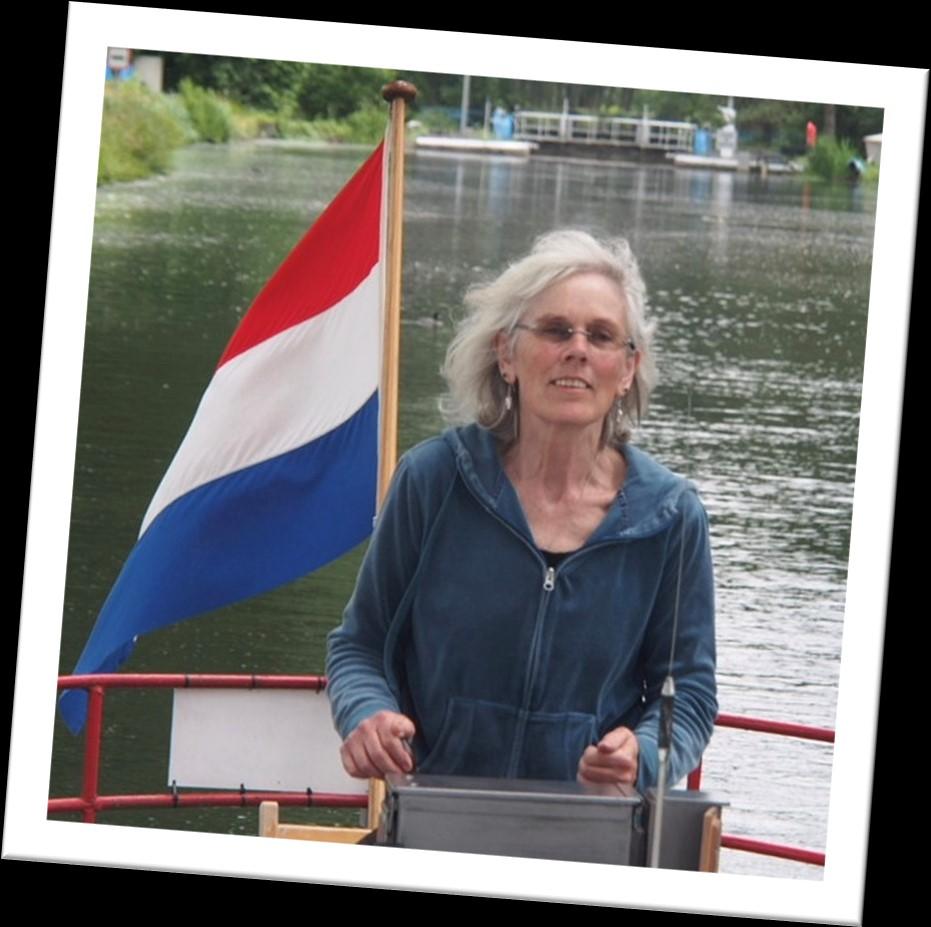
SisterShip 55
New from Valerie Poore
This travelogue is a sequel to Faring to France on a Shoe and is an account of Val Poore's further cruising adventures with her partner, Koos, on their Dutch Barge, Hennie Ha, aka the Shoe.
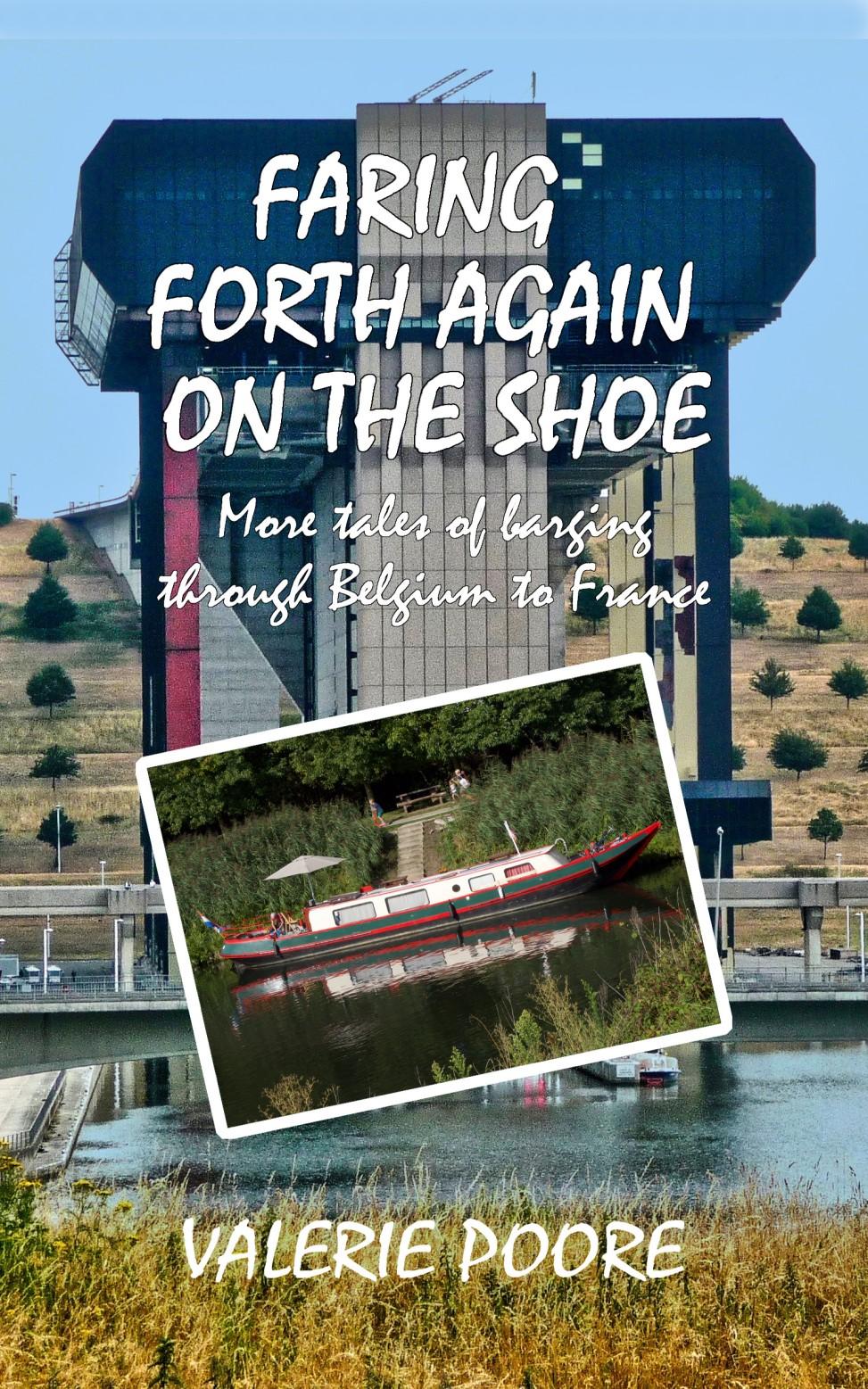
Once again, Val and Koos set off for a summer of 'faring', the word they use to describe travelling by barge as distinguished from cruising and sailing. It is, after all, a very different experience to meander along the canals at a snail's pace and enjoy the waterside scenery, towns and encounters with local people. These are adventures of a gentle kind that take them along the lovely waterways of Belgium, through numerous locks of various shapes and sizes, and into France through a very beautiful back door.
Available via Amazon:
www.amazon.com/Faring-Forth-Again-ShoeBarging/dp/B093LRK88M

SisterShip 56
Book Reviews
Adventures of Freddy D. Fender and the Dreamchaser
 by Melinda Biggs
by Melinda Biggs
ISBN 978-1922839992 232 pages
Review © Beatrice Sheehan. 2023.
Following the adventures at sea of Freddy the fender, Melinda Bigg’s enchanting epic takes readers on a “fantastically wonderful” voyage. This modern narrative is cleverly structured into 35 chapters and is perfect for a wide age range. The language is both simple and sophisticated. It offers challenges for younger readers as well as a joyful and easily read tale for 9- to 12-year-olds. I can imagine siblings reading a chapter a night at bedtime to their younger brother or sister. For working parents who are often tired the short chapters give opportunity to engage with their children at bedtime andbond.
Melinda Biggs has also created an opportunity for the book to be interactive. At the end of each chapter, children are encouraged to draw pictures of their interpretation. Hence, the book as object is not precious. It can be changed, enhanced, and personalised to become the reader’s adventure as well. This encourages ownership, empowering the reader to draw from their own experiences to embellish thebook.
The story has a circular structure. It begins with Freddy becoming part of the Dreamchaser family. A calamitous incident causes Freddy to be separated from the people he loves, and he gets entangled with dangerous people who are plotting a crime. Friends rally with the story ending happily. However, like fables and life itself, Freddy evolves, his friends mature as well, and the reader learns some secrets about survival and how to draw from one’s inner strengths.
The mysterious sea, a metaphor for life’s
vicissitudes forms a background tapestry from which themes of resolving challenges, belonging, believing in oneself, loyalty and love are explored. Friendships are formed between the most unlikely characters teaching us to accept and love difference. Readers may come across the odd word that doesn’t quitesound right or is spelt abit strangely. Freddy is learning new words and expressionsin the sameway as our readers are.
Melinda Biggs brings humour, delightfully colourful language and a whimsical tone that charms the readers into wanting more and more. This story is “phantasmagorical”, deceptively simple but actually so cleverly layered. Children are introduced to the world of the sea, the science of winds and currents. They learn about the beautiful creatures inhabiting the aquatic environment and the need to respect them.
This is a modern parable, rich in allegory and imbued with good wholesome values.
Once started, it cannot be put down. We are all Dreamchasers. “Crickey!It’s bloomin’ lovely!”
SisterShip 57
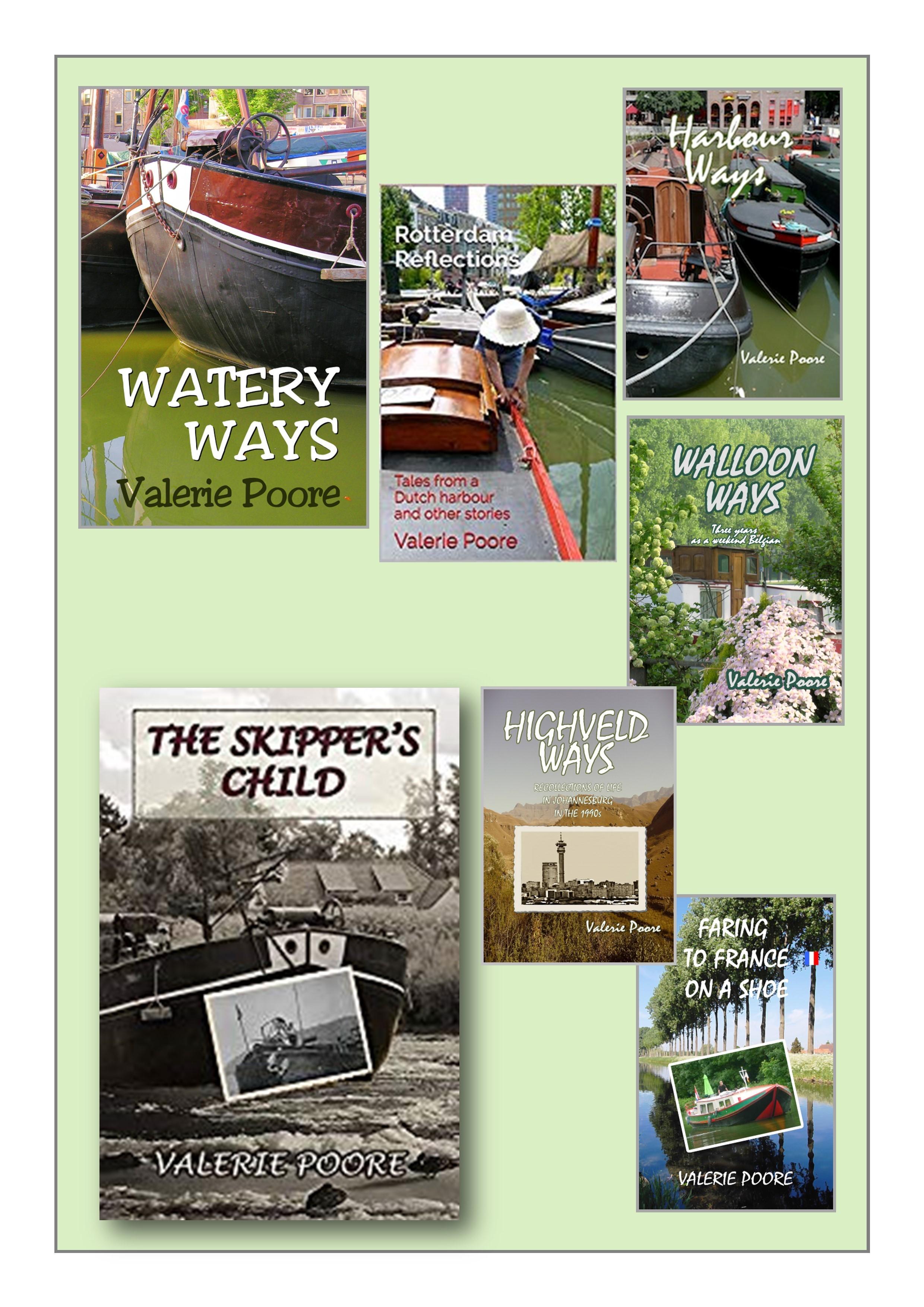
Valerie’s books can be found on Amazon.com


SisterShip 59 Order your copy from www.lisablairsailstheworld.com

















































































































 ABOVE: Kinabalu.
BELOW: Sabah tea.
ABOVE: Kinabalu.
BELOW: Sabah tea.























 by Melinda Biggs
by Melinda Biggs



